ENGLEWOOD, Colo. — Redemption can only follow if there's first heartbreak.
And, if anything, "heartbreak" may undersell the nature of the Broncos' 1996 campaign.
In Denver's second season under head coach Mike Shanahan, everything appeared to be clicking for the Broncos. Behind Shanahan's dominant offense and a top-10 defense, the Broncos jumped out to a 12-1 start. John Elway, at 36 years old, said that he was at the most confident he'd ever been in his career. Denver finished the season at 13-3, tied for the best record in the league, and ready to take their well-balanced team deep into the playoffs.
But in Denver's playoff opener, they were shocked by the wild-card Jaguars, who rode a five-game winning streak into the postseason to upset the Broncos at home.
"No matter what happens in the next three or four years, we'll always look back and say, 'I can't believe we lost this one,'" Shannon Sharpe said after the game. "I don't think I'll ever be in a better situation than we had this year. Everything was just so ideal.
"And to have it slip away — this sets the organization back four years, at least. It's going to be the year 2000 before we can ever recover from this."
Even today, the loss stings for the former head coach.
"We were so disappointed because we were a Super Bowl team," Shanahan says. "I don't think I did a good job of preparing our guys, because maybe it was the time that we had off, maybe it was our game plan, or a combination of both. But at the end of the day, we didn't play as physical as we normally play, and we still had a chance to win it, but I was not proud of the way it ended."
Despite the immense disappointment, Shanahan and the Broncos focused on refusing to let the loss be the kind of roadblock that Sharpe feared it would be.
The message was clear.
"If we get that opportunity like we did last year … regardless of where we're at or where we're playing," Shanahan recalls saying, "we're going to take advantage of our next opportunity."
They'd have their chance that year, but it wouldn't be easy. The Broncos won just one fewer game, but it wasn't good enough to win the division. Their road to a championship would have to start with the wild-card round and the team that crushed their title hopes a season earlier.
Using the lessons they learned from the '96 playoff loss, the Broncos and Shanahan ensured there would be no repeat disappointment.
"[In 1996,] Terrell Davis carried the ball 14 times for 91 yards and averaged, obviously a lot of yards per carry, and then the next year we play them and we're going to be a lot more physical," Shanahan says. "We ran the ball 49 times for over 300 yards. So, big difference. It was kind of like the mindset — losing one year and you kind of knew why, and our team really responded in the right way."
That game began what quickly became widely known as the "Revenge Tour." Over the 1997 playoff run, the Broncos faced teams that delivered painful losses either in 1996 or the 1997 regular season. Next up was the Chiefs, who had beaten the Broncos in a Week 12 game in 1997 that in essence secured the AFC West title.
On the road in a raucous Arrowhead Stadium, the Broncos had their work cut out for them. Kansas City's defense gave up the fewest points that season and picked off the fourth-most passes.
Ahead of the game, Shanahan says, he told Elway that the game plan would likely not allow him to engage in a shootout.
"'John, this defense, they are good. … They get turnovers and they sack quarterbacks,'" Shanahan recalls telling Elway the week of the game. "I said, 'You're probably not even going to get 20 throws in the game. We're going to have to run the ball to win it. This team is a Super Bowl type defense, so … you're going to have to understand that we're going to have to run the ball as much as we probably normally do.'
"… John was all in to win the Super Bowl, because he knew how bad he felt after losing that game the year before against Jacksonville. He played, what I consider, a flawless game. People look at it and go, 'Nineteen passing attempts and you didn't get a lot of yards,' but you've got to find a way to win. For John, the competitor of him came out. He said, 'I'm going to do anything to give us a chance to win.'"
In freezing temperatures, the Broncos and Chiefs dueled in a low-scoring affair. Kansas City led late after a 10-point run gave them a 10-7 lead in the third quarter. But behind 101 yards and two touchdowns from Terrell Davis, the Broncos came out on top and moved on to the AFC Championship.
There, the Broncos faced off against the Steelers, who handed them a 35-24 loss just a few weeks earlier. At Three Rivers Stadium, the Broncos held a late 10-point lead, but Kordell Stewart and Pittsburgh cut it to three with just over three minutes to play. If they could force Denver into a three-and-out, the Steelers could have a shot to tie or win the game.
On third-and-6, the Steelers had their shot. One incomplete pass and the Broncos would have to punt from their own 15-yard line.
After the two-minute warning, Shanahan called the play. Elway would take the snap from shotgun with all five receivers, including Sharpe, the tight end, spread wide across the field to run seven- or eight-yard hitch routes.
Sharpe, though, wasn't familiar with the call.
"John came into the huddle and called, 'All pivot,'" Sharpe said after the game. "I told him, 'John, we don't have that play.' He said, 'We do now.' I'm leaving the huddle and I yell at him, 'John, what do you want me to do?'"
Simple, Elway told him: "Just get open."
From the slot, Sharpe was matched up with linebacker Jason Gildon, a future Pro Bowler and All-Pro. Still, it was the mismatch Elway was looking for.
"That happens a lot," Shanahan says. "… Maybe he heard something different than he thought, especially being in that position. But John and Shannon were very close. … He looked at him and said, 'Hey, get open.' And that's what he did. He kind of shook the guy and John hit it right on the money and all of a sudden now the game's over. If not, they've got a lot to time to come back and try to score."
The Broncos were now on the doorstep of the ultimate goal. But there was still a significant unease about town. Denver had been to the Super Bowl four times before, and each game was rough, to say the least. Even with Elway under center, the Broncos lost three Super Bowls by an average of 32 points, and those games lingered in the collective consciousness among Broncos fans.
"People didn't even want us to go to the Super Bowl that year because we'd been embarrassed in three Super Bowls," Shanahan says. "… There was a lot of question marks, especially against a team that was favored like Green Bay was."
Shanahan didn't feel that way, of course. In fact, he said he felt perhaps as confident as ever.
Look back through the coaching career of the Broncos' all-time winningest coach — new Ring of Famer Mike Shanahan.

Coach Mike Shanahan of the Denver Broncos in 1990. (AP Photo / Al Messerschmidt)

Owner Pat Bowlen and coach Mike Shanahan at the Paul D. Bowlen Memorial Broncos Centre.

Coach Mike Shanahan signs autographs for fans at 1995 training camp.

A portrait of Mike Shanahan in 1995

Denver Broncos head coach Mike Shanahan talks to quarterback John Elway during the first quarter against the Buffalo Bills in Denver Sunday night, Sept. 3, 1995. (AP Photo/Ed Andrieski)

Oakland Raiders vs. Denver Broncos at Oakland Alameda County Coliseum Sunday, December 24, 1995. The Broncos beat the Raiders 31-28. Denver Broncos quarterback John Elway (7) shakes hands with head coach Mike Shanahan. (AP Photo/Al Golub)

Coach Mike Shanahan rides in a cart at the June 9, 1997 Mike Shanahan Golf Classic.

John Denver and Mike Shanahan during the Special Olympics Dinner on April 26, 1997 in Denver, Colorado. Photo by Michael Martin
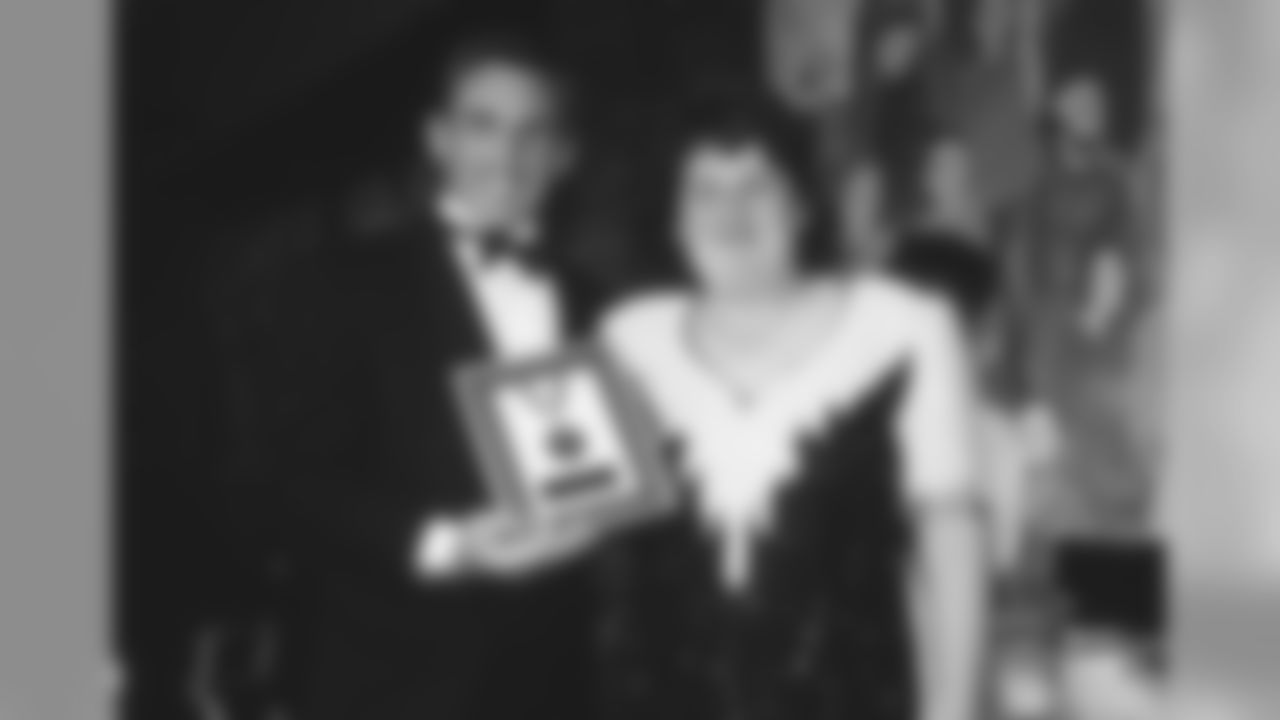
Mike Shanahan during the Special Olympics Dinner on April 26, 1997 in Denver, Colorado. Photo by Michael Martin

Mike Shanahan, with Gary Kubiak behind him, checks the play clock during a game against the New England Patriots at Mile High Stadium in Denver, CO on October 6, 1997.

Mike Shanahan looks up to the big screen to watch an instant replay against the Kansas City Chiefs at Arrowhead Stadium in Kansas City, MO on November 16, 1997.
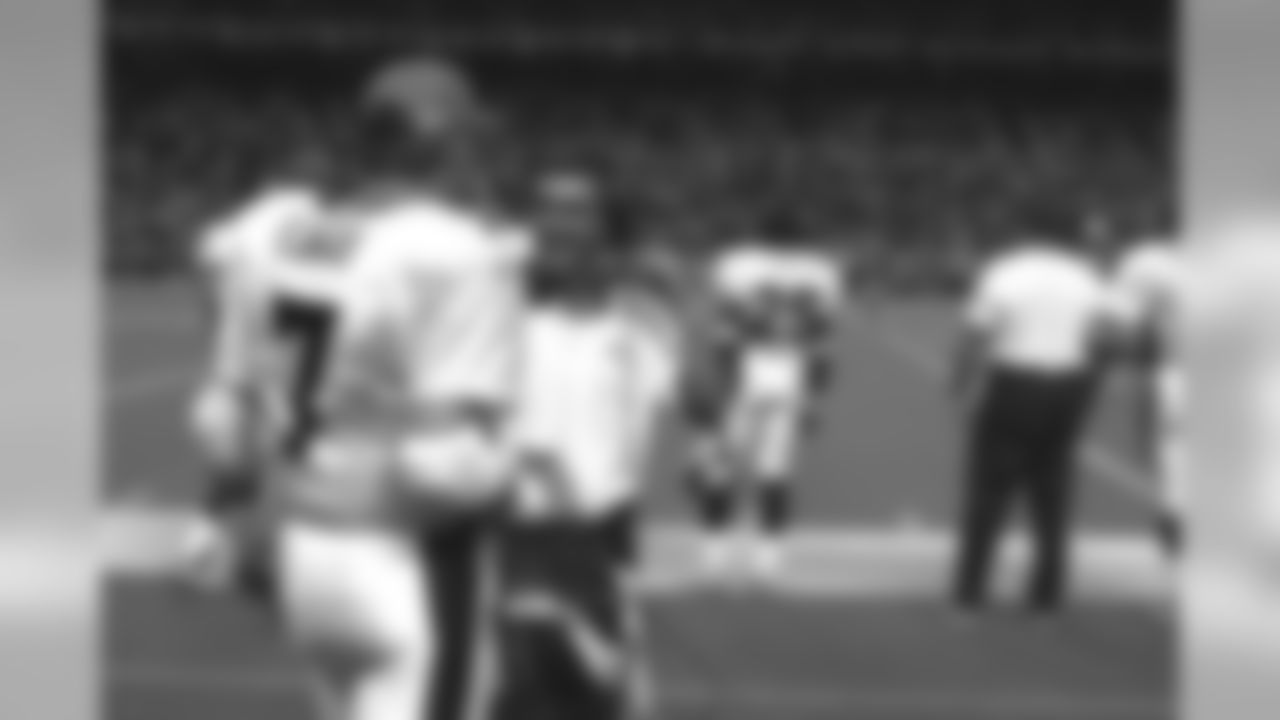
John Elway talks with Mike Shanahan on the sideline during a game against the Seattle Seahawks at the Kingdome in Seattle, WA on September 7, 1997.

Coach Mike Shanahan of the Denver Broncos talks with coach Pete Carroll of the New England Patriots in August 1997. (AP Photo / Al Messerschmidt)

Owner Pat Bowlen and coach Mike Shanahan look on during an August 4, 1997 preseason game against the Miami Dolphins in Mexico City.
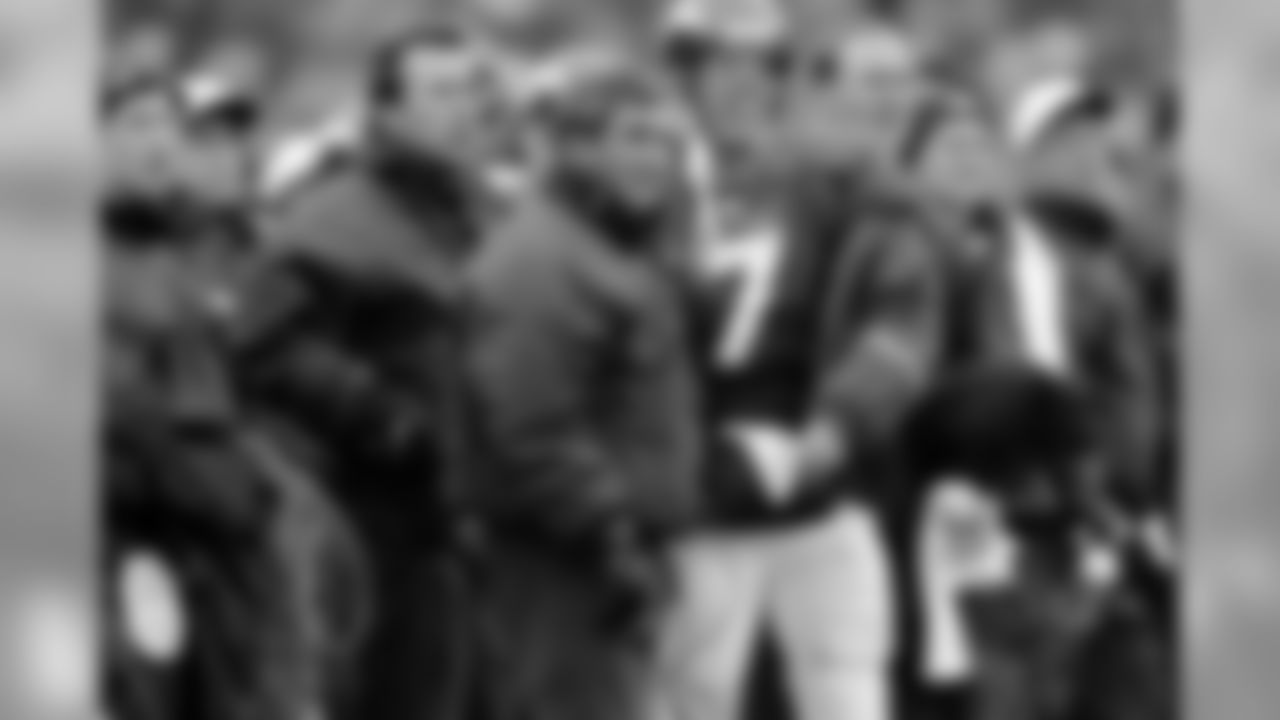
Denver Broncos head coach Mike Shanahan, Hall of Fame quarterback John Elway (7) and offensive coordinator Gary Kubiak watch from the during an NFL game against the Carolina Panthers on November 9,1997. The Broncos defeated the Panthers 34-0. (Peter Read Miller via AP)
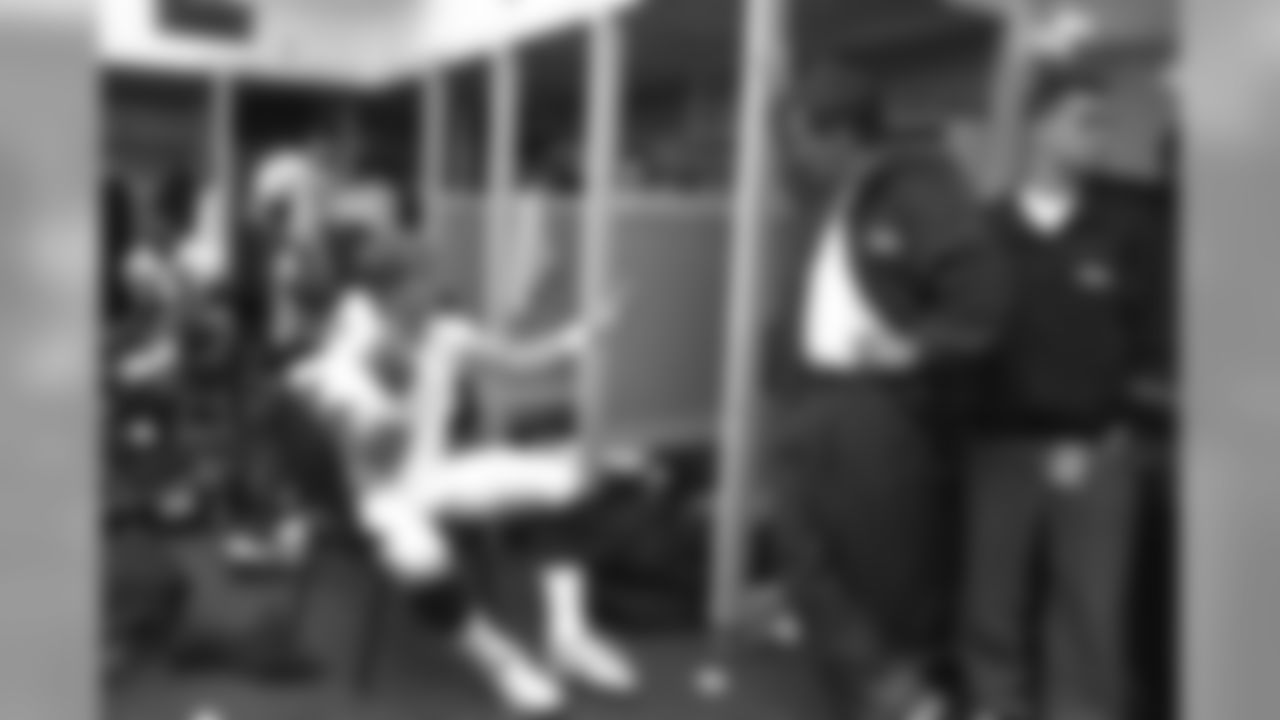
John Elway and Mike Shanahan discuss strategy in the locker room after a game against the San Diego Chargers at Jack Murphy Stadium in San Diego, CA on November 30, 1997.

Head Coach Mike Shanahan yells directions during the AFC Championship game against the Pittsburgh Steelers at Three Rivers Stadium in Pittsburgh, PA on January 11, 1998.
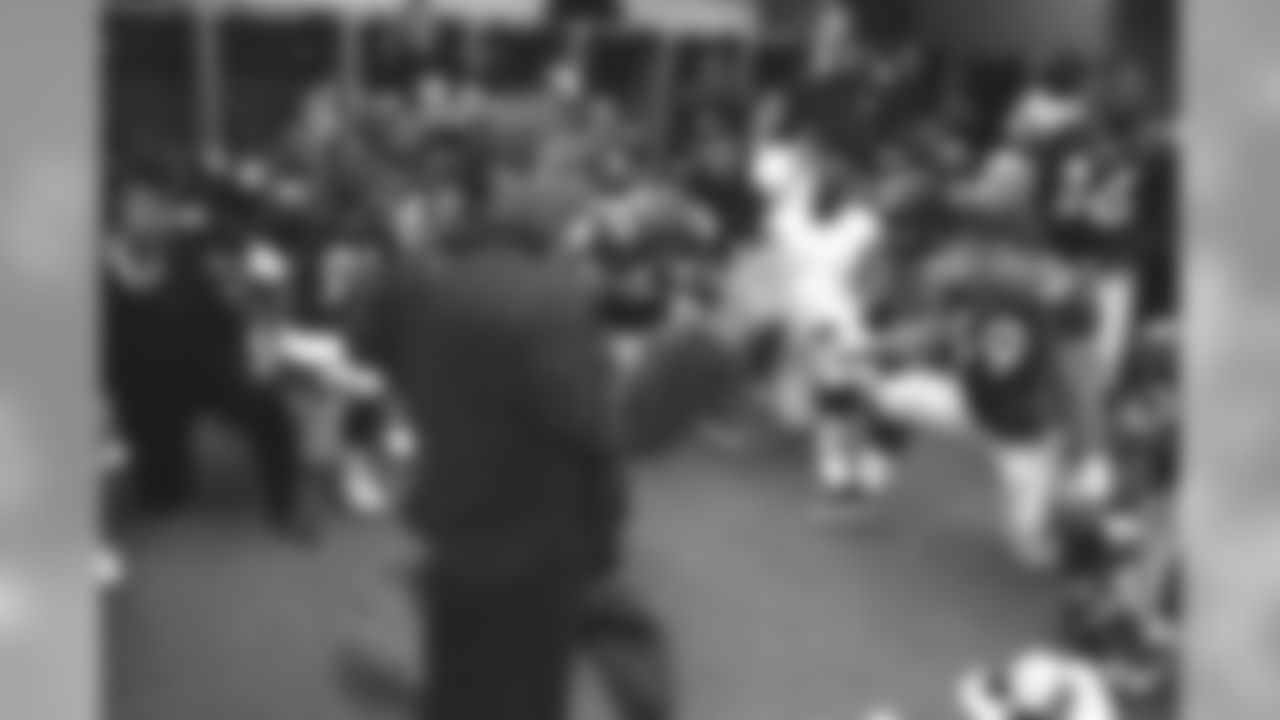
Head coach Mike Shanahan speaks with his players in the locker room after defeating the Jacksonville Jaguars at Mile High Stadium in Denver, CO on December 27, 1997.

Head Coach Mike Shanahan addresses the team in the locker room after the Broncos won their divisional round playoff game against the Kansas City Chiefs at Arrowhead Stadium in Kansas City, MO on January 4, 1998.
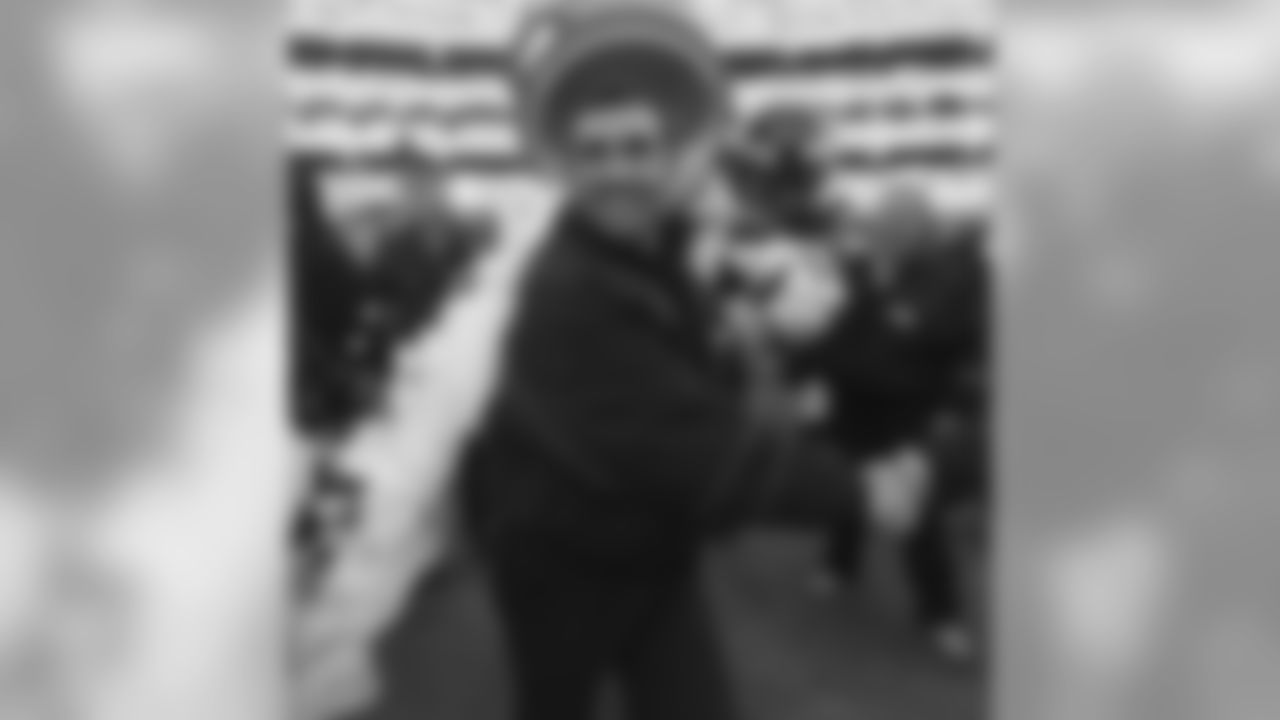
Denver Broncos linebacker Bill Romanowski douses coach Mike Shanahan after beating the Pittsburgh Steelers 24-21 to win the AFC Championship Sunday, Jan. 11, 1998, at Three Rivers Stadium in Pittsburgh. (AP Photo/Doug Mills)
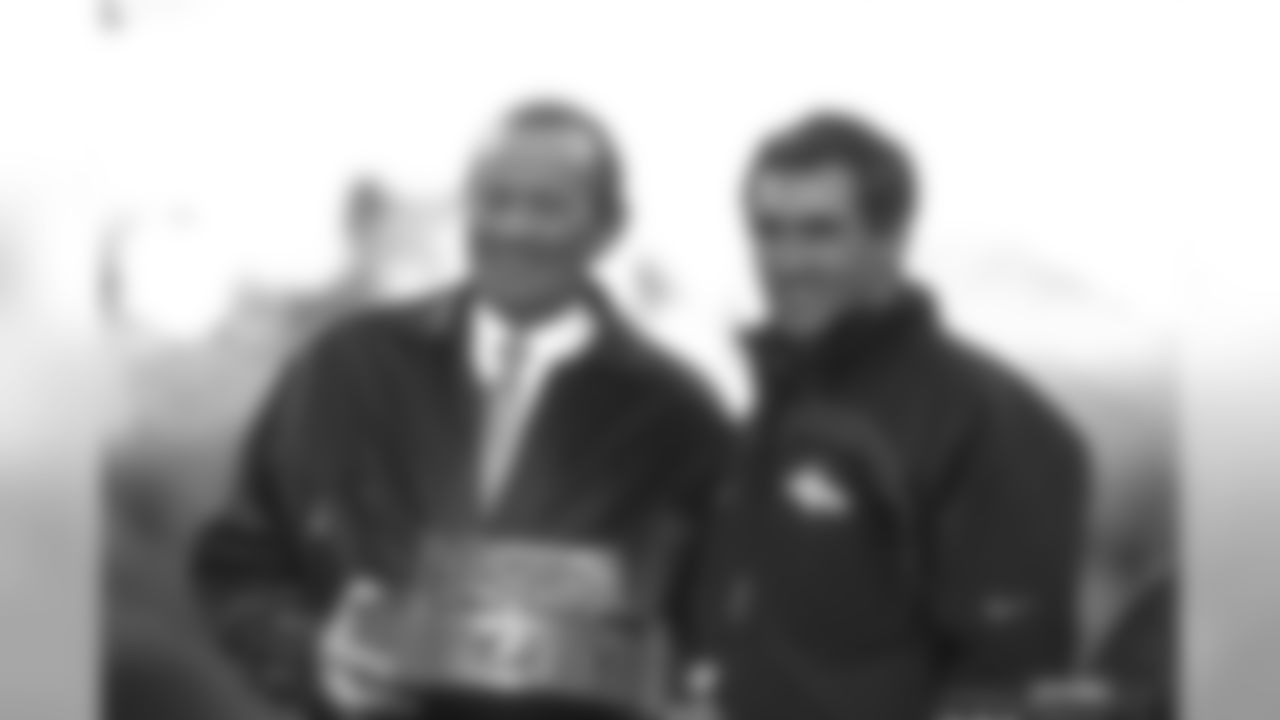
Owner Pat Bowlen and Head Coach Mike Shanahan pose with the AFC Championship trophy after the Broncos' victory against the Pittsburgh Steelers at Three Rivers Stadium in Pittsburgh, PA on January 11, 1998.

Mike Shanahan holds up the AFC Championship trophy and says, "This is not the one we want," after the Broncos beat the Pittsburgh Steelers at Three Rivers Stadium in Pittsburgh, PA on January 11, 1998.
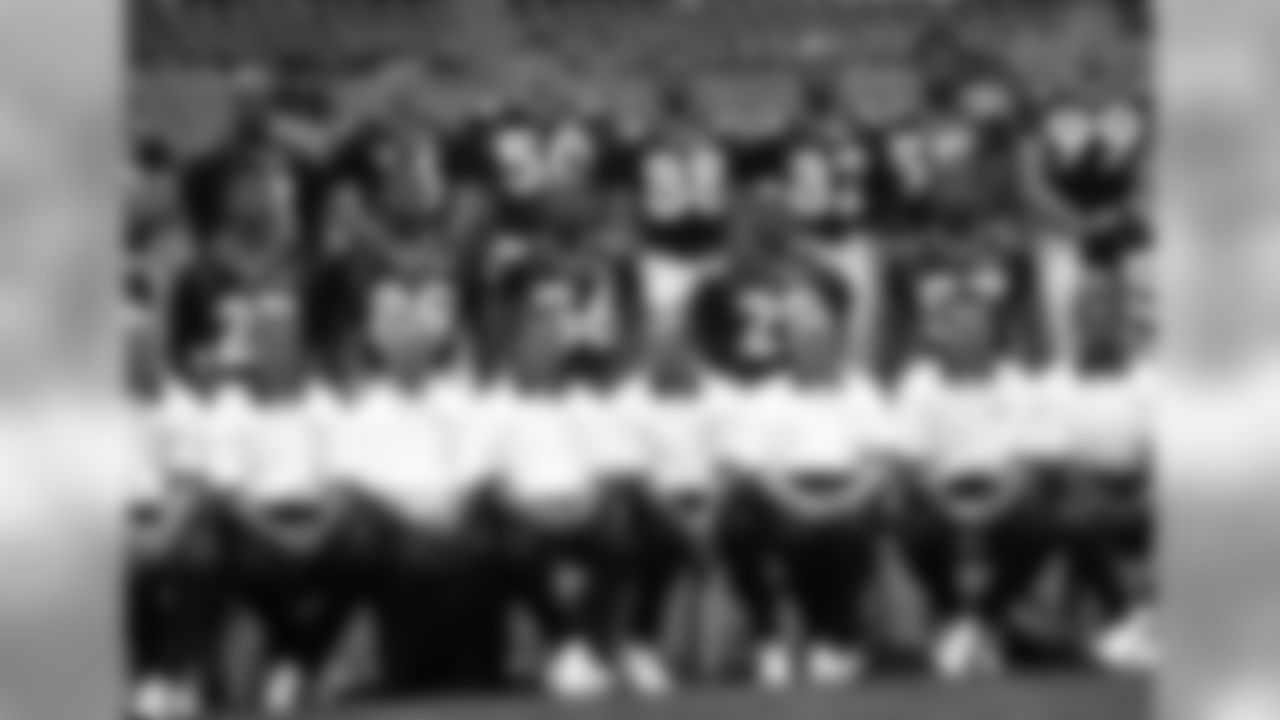
Coach Mike Shanahan of the Denver Broncos poses with players and staff on photo day at Super Bowl XXXII January 20, 1998 in San Diego, California. (AP Photo / Al Messerschmidt)

Head Coach Mike Shanahan shakes the hand of Shannon Sharpe during pregame warmups before Super Bowl XXXII against the Green Bay Packers on January 25, 1998.
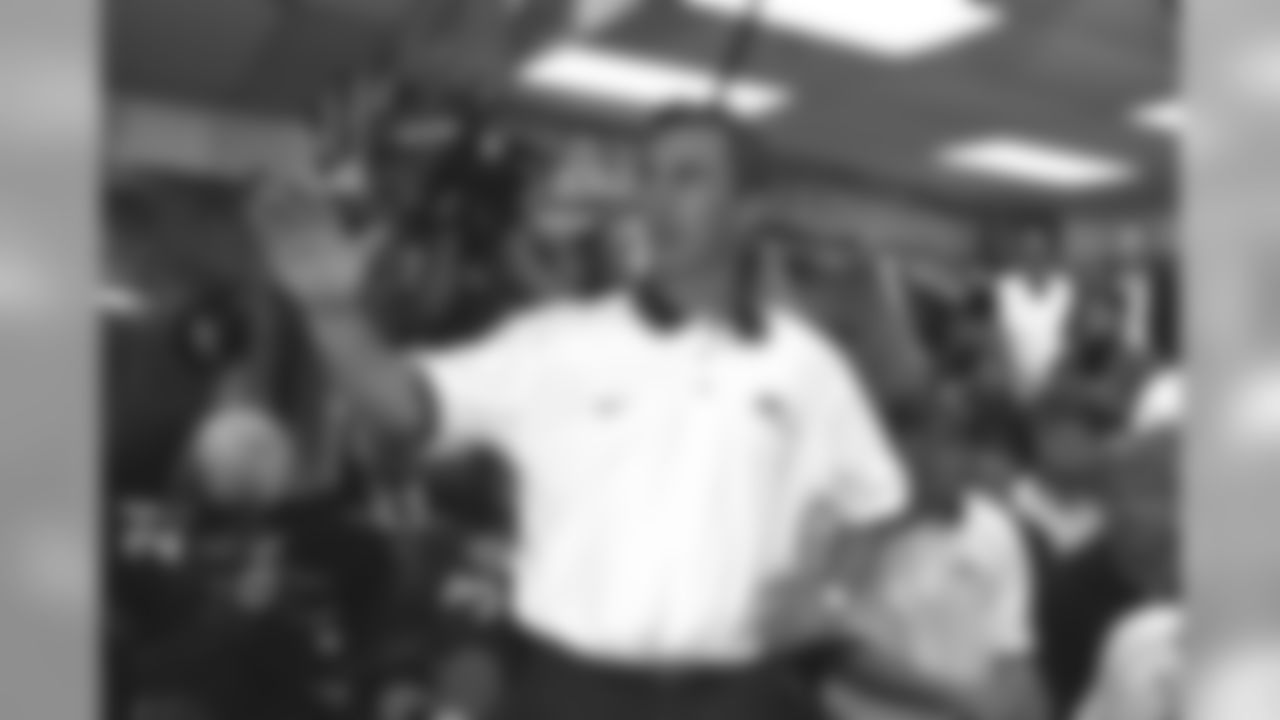
Mike Shanahan addresses his team in the locker room during his post-game speech after winning Super Bowl XXXII against the Green Bay Packers at Qualcomm Stadium in San Diego, CA on January 25, 1998.
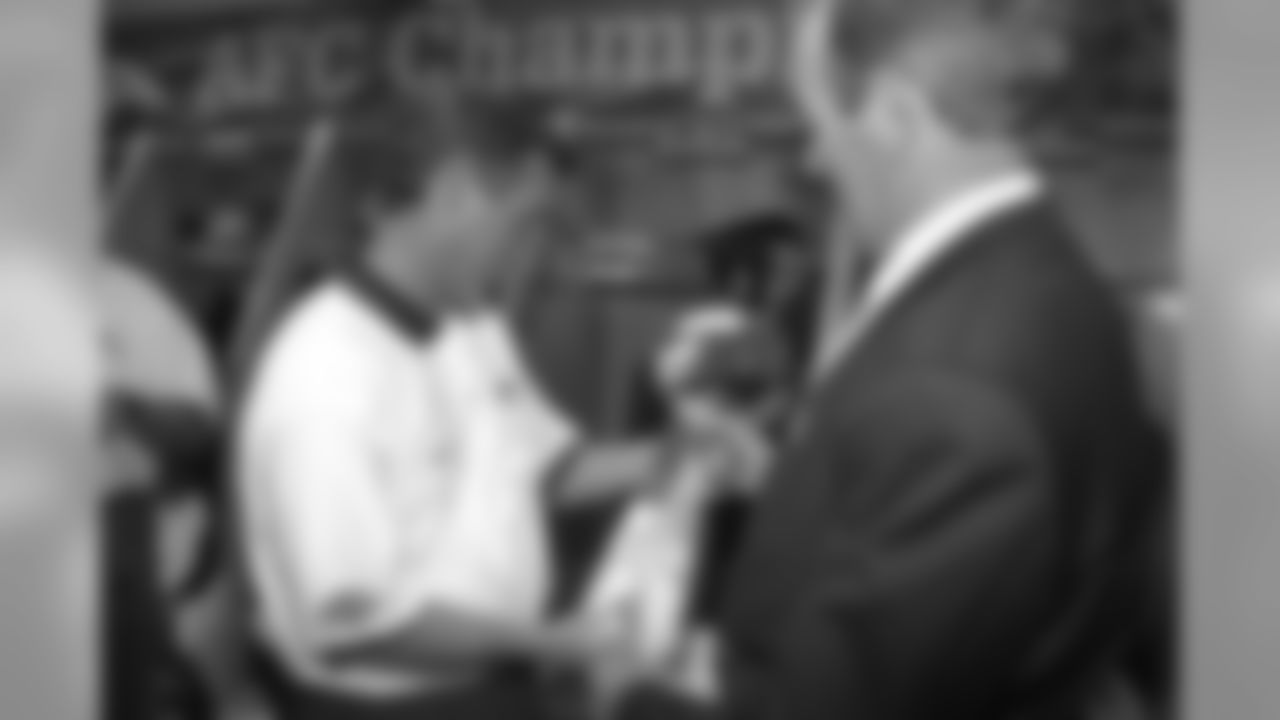
Head Coach Mike Shanahan takes the Vince Lombardi Trophy from owner Pat Bowlen in the locker room during post-game celebrations after winning Super Bowl XXXII against the Green Bay Packers at Qualcomm Stadium in San Diego, CA on January 25, 1998.

John Elway receives post-game congratulations in the locker room from coach Mike Shanahan after winning Super Bowl XXXII against the Green Bay Packers at Qualcomm Stadium in San Diego, CA on January 25, 1998.

Mike Shanahan waves to the crowd of fans during the team's Super Bowl XXXII championship parade.

Head coach Mike Shanahan during the championship parade rally, the day after returning from the Super Bowl.

Mike Shanahan speaks to the crowd during the Super Bowl XXXII championship parade and rally.

Pat Bowlen and Mike Shanahan poses for a photo with the Lombardi Trophy.

Mike Shanahan watches the action from the sidelines against the San Diego Chargers at Mile High Stadium in Denver, CO on November 8, 1998.

Head coach Mike Shanahan congratulates his quarterback John Elway during a game against the New England Patriots at Mile High Stadium in Denver, CO on September 7, 1998.

Mike Shanahan gives a game ball to John Elway after the Broncos won their first playoff game against the Miami Dolphins at Mile High Stadium in Denver, CO on January 9, 1999.
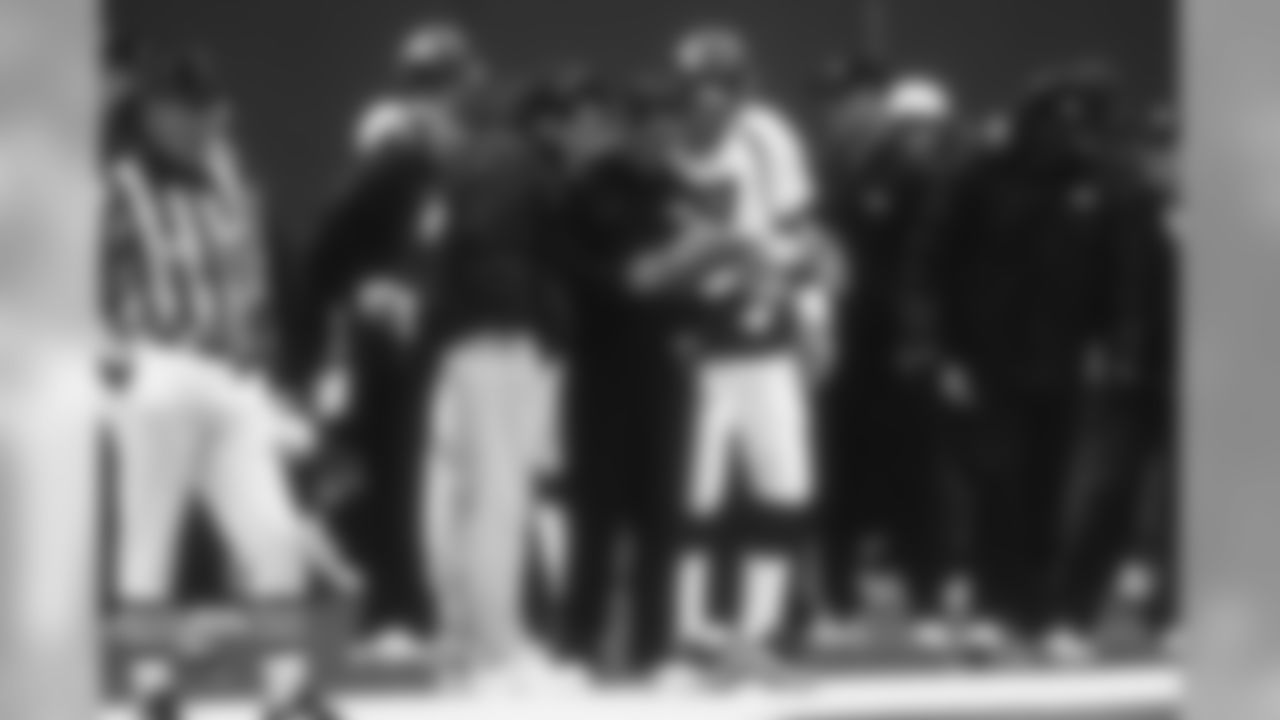
Mike Shanahan, Gary Kubiak and John Elway discuss strategy along the sidelines during a game against the New York Giants at Giants Stadium in East Rutherford, NJ on December 13, 1998.

Mike Shanahan gives a postgame speech after a Broncos win against the Cincinnati Bengals at Cinergy Field in Cincinnati, OH on November 1, 1998.

Mike Shanahan gets a victory hug from Keith Burns after winning Super Bowl III against the Atlanta Falcons at Pro Player Stadium in Miami, FL on January 31, 1999.

Denver Broncos coach Mike Shanahan and the sideline react to a scoring play during the Broncos' 34-19 victory over the Atlanta Falcons in Super Bowl XXXIII on January 31, 1999 at Pro Player Stadium in Miami, Florida. (AP Photo / Al Messerschmidt)

John Elway gets a hug from Mike Shanahan after winning Super Bowl III against the Atlanta Falcons at Pro Player Stadium in Miami, FL on January 31, 1999.

Denver Broncos head coach Mike Shanahan, right, and Atlanta Falcons head coach Dan Reeves, left, meet at midfield at the end of Super Bowl XXXIII, in Miami Sunday Jan. 31, 1999. The two had worked together on the Broncos' coaching staff in the '80s. (AP Photo/John Gaps III)

Mike Shanahan receives the Lombardi Trophy from Terry Bradshaw after winning Super Bowl III against the Atlanta Falcons at Pro Player Stadium in Miami, FL on January 31, 1999.

John Elway and Mike Shanahan celebrate their second straight Super Bowl title after defeating the Atlanta Falcons at Pro Player Stadium in Miami, FL on January 31, 1999.
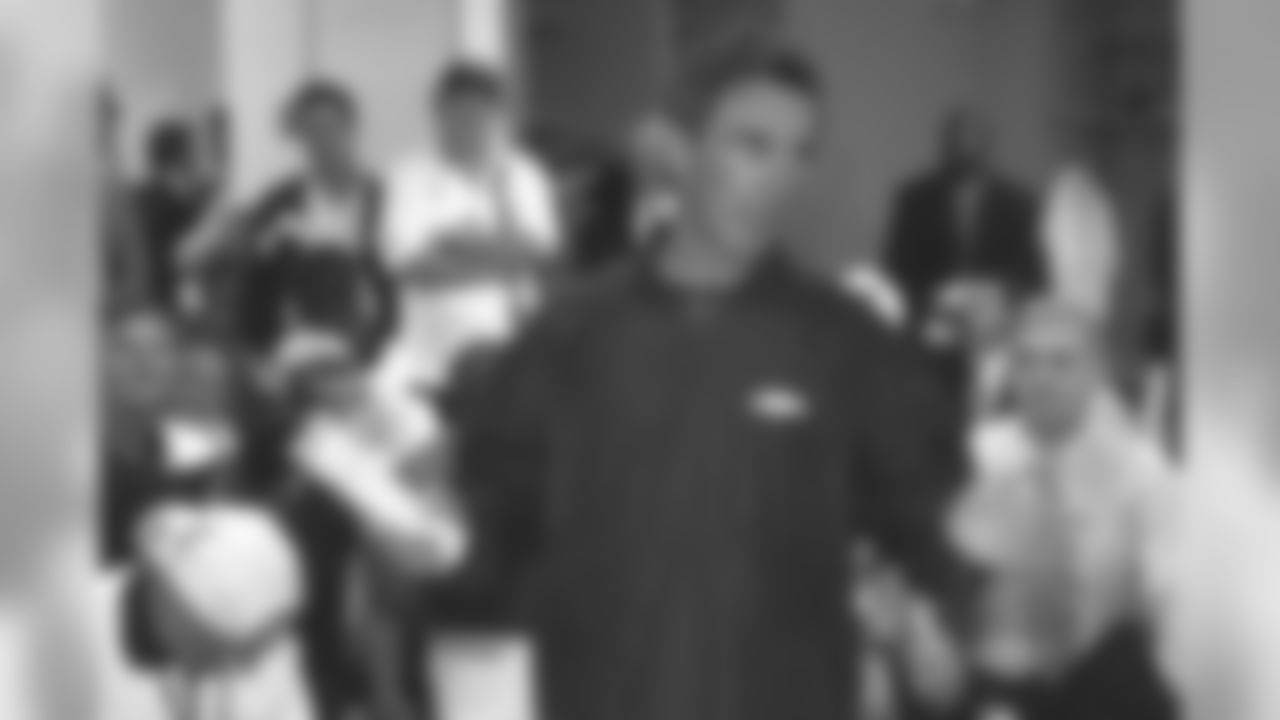
Mike Shanahan addresses his players following the Broncos' Super Bowl XXXIII victory against the Atlanta Falcons at Pro Player Stadium in Miami, FL on January 31, 1999.

Denver Broncos quarterback John Elway, left, joins head coach Mike Shanahan at a news conference Monday, Feb. 1, 1999, in a downtown Miami hotel in holding the Super Bowl MVP trophy that Elway earned with his performance in leading the Broncos to their second straight title by winning Super Bowl XXXIII over the Atlanta Falcons. (AP Photo/David Zalubowski)
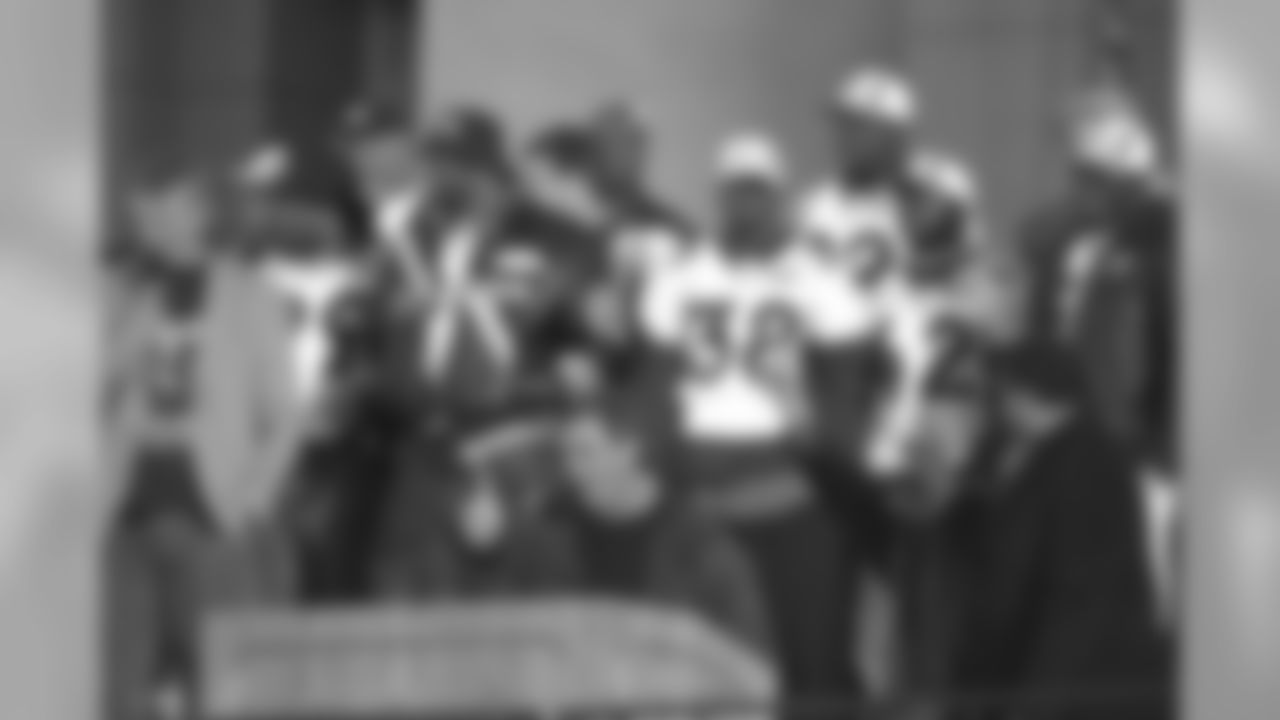
An estimated 350,000 fans turned out in downtown Denver and then on to city hall to catch a glimpse of their back-to-back world champion Broncos. Mike Shanahan gets a chant started of "one more year, one more year ..."
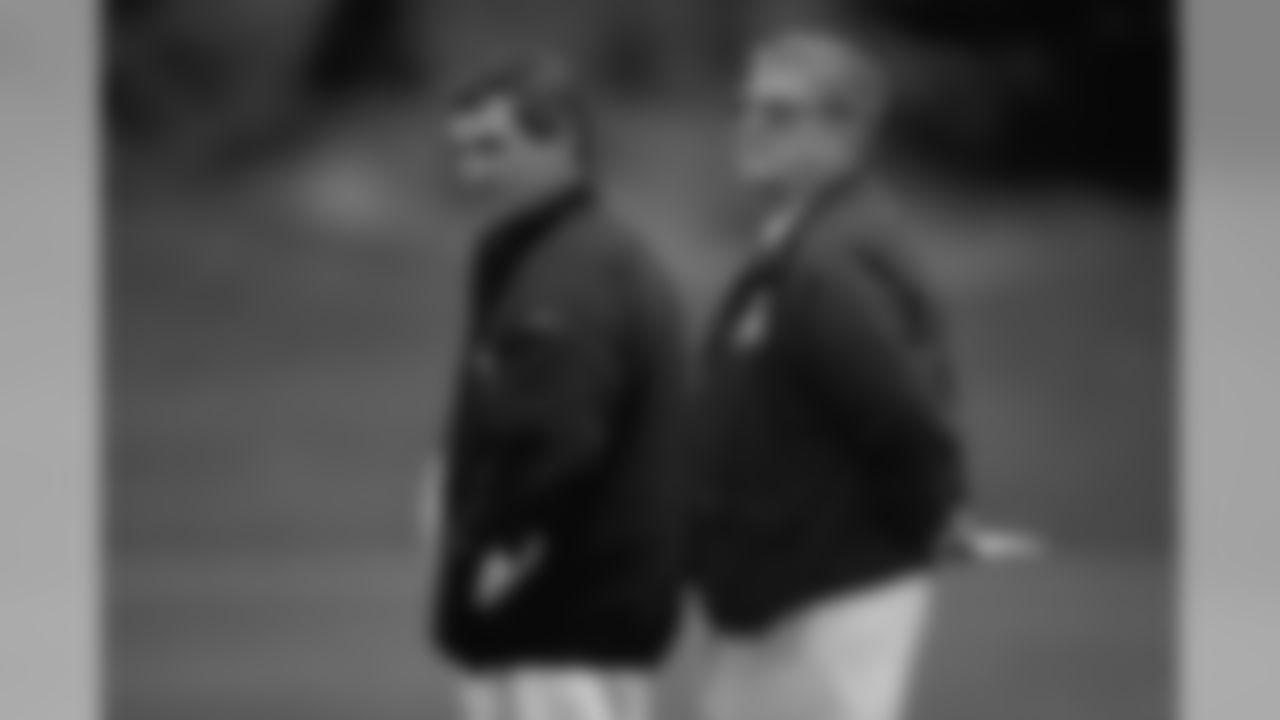
Mike Shanahan and Jack Elway watch the players participate in the Broncos' minicamp held at the Broncos' training facility in Englewood, CO.

Mike Shanahan and Terrell Davis talk before the start of their season opener against the St. Louis Rams against the St. Louis Rams at Trans World Dome in St. Louis, MO on September 4, 2000.

Mike Shanahan heads into the locker room prior to the start of the game against the San Francisco 49ers at Mile High Stadium in Denver, CO on December 23, 2000.
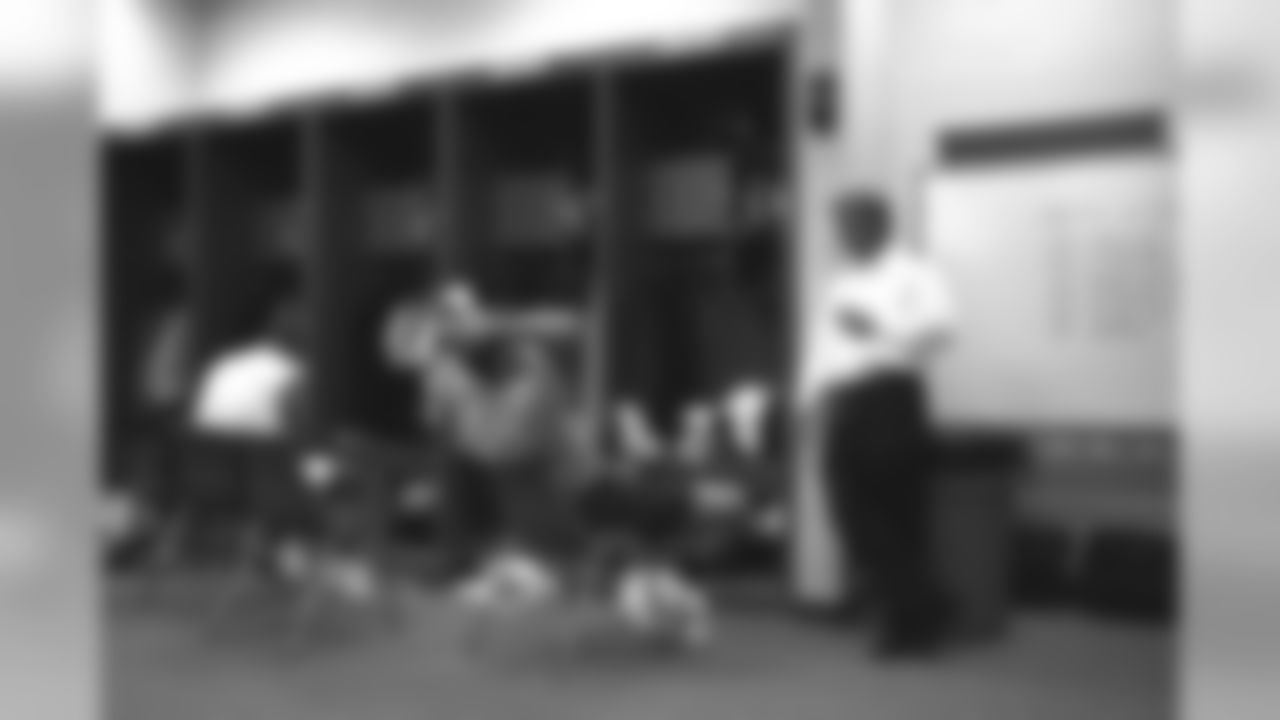
Mike Shanahan and Brian Griese talk before the start of their season opener against the St. Louis Rams against the St. Louis Rams at Trans World Dome in St. Louis, MO on September 4, 2000.

Mike Shanahan shakes hands with Raiders head coach Jon Gruden after the game against the Oakland Raiders at Network Associates Coliseum on September 17, 2000.

Mike Shanahan watches the action from the sidelines against the San Diego Chargers at Qualcomm Stadium in San Diego, CA on October 8, 2000.

Mike Shanahan addresses his players following the Broncos' victory over the Falcons against the Atlanta Falcons at Mile High Stadium in Denver, CO on September 10, 2000.

Mike Shanahan addresses his players following the Broncos' victory against the San Francisco 49ers at Mile High Stadium in Denver, CO on December 23, 2000.

Mike Shanahan speaks to the media at the Broncos' training camp held in Greeley, CO.

Mike Shanahan gives his postgame speech following the Broncos' victory against the New Orleans Saints at Invesco Field at Mile High in Denver, CO on August 25, 2001.
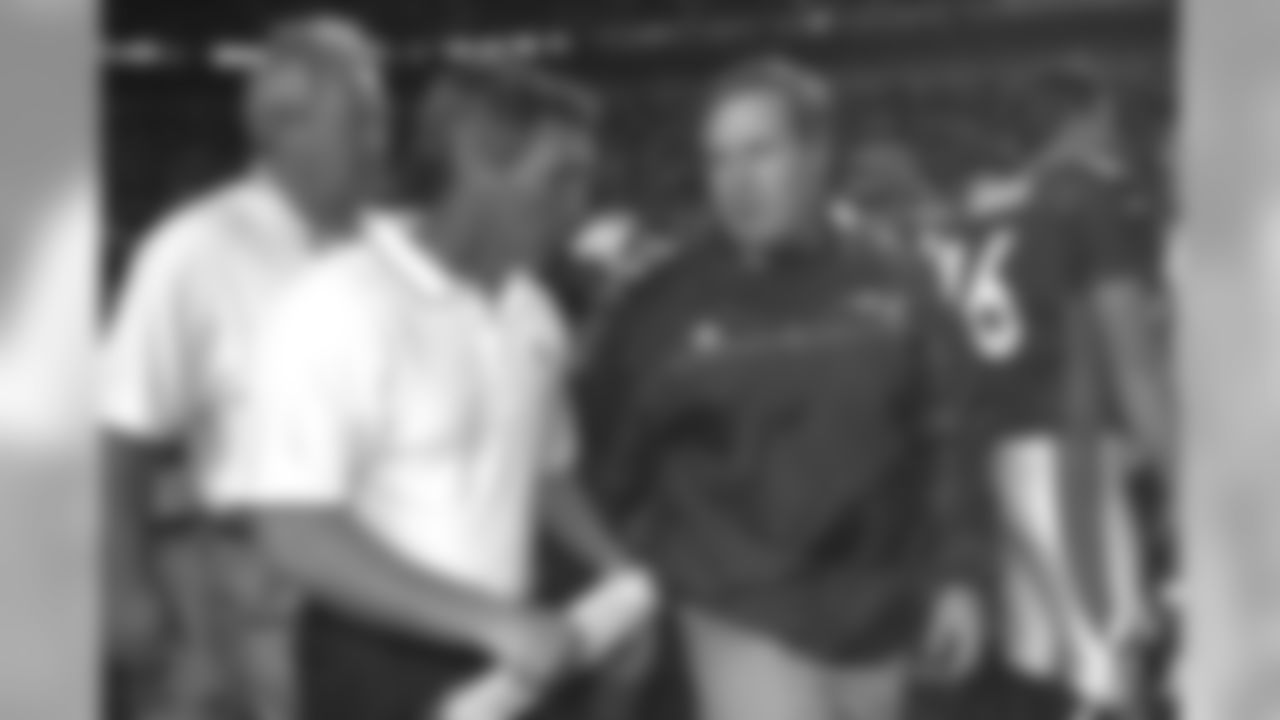
Mike Shanahan chats with Bill Belichick following the game against the New England Patriots at Invesco Field at Mile High in Denver, CO on October 28, 2001.

Following the 2002 NFL Draft, second-round pick Clinton Portis sits down to talk with Mike Shanahan.
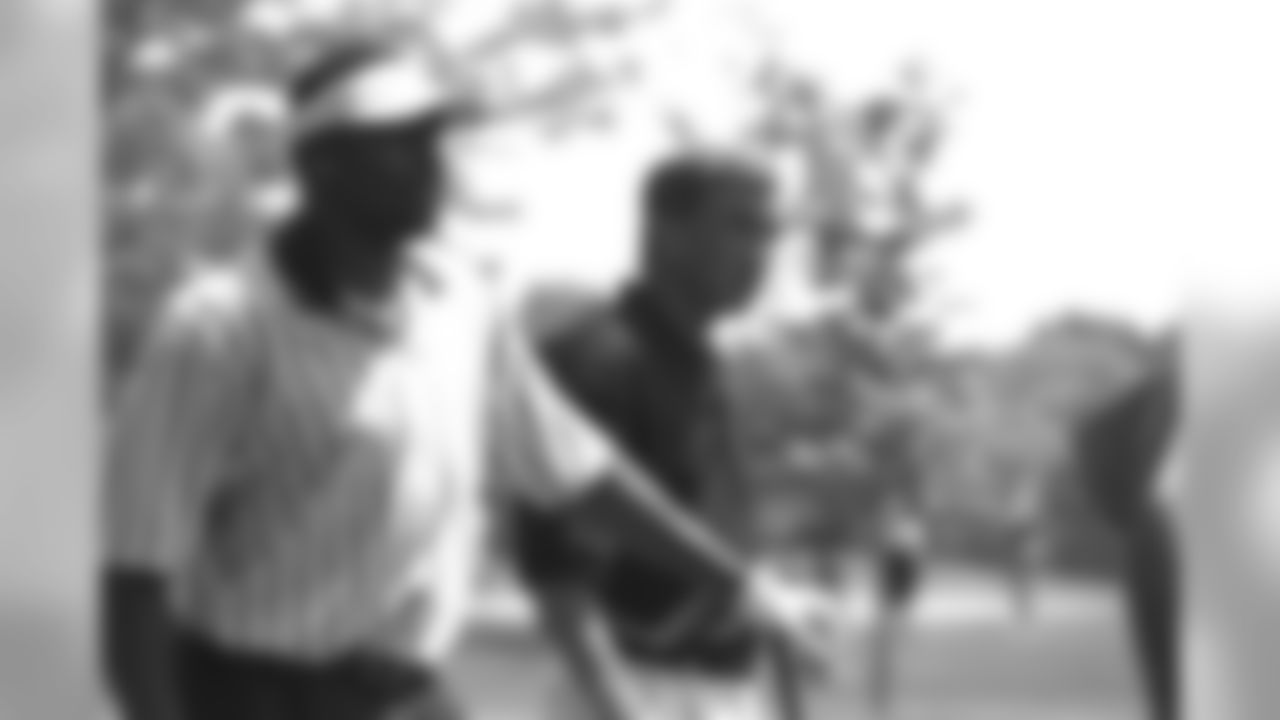
Various players, coaches, alumni and local celebrities came out the Inverness Golf Course in Englewood, CO. to take part in the annual Mike Shanahan Golf Classic.

Mike Shanahan chats with Terrell Davis along the sidelines against the San Francisco 49ers at INVESCO Field at Mile High in Denver, CO on August 19, 2002.

Steve Atwater greets Mike Shanahan along the sidelines against the St. Louis Rams at Invesco Field at Mile High in Denver, CO on September 8, 2002.

Mike Shanahan gives instructions to Jason Elam during a game against the Buffalo Bills at Invesco Field at Mile High in Denver, CO on September 22, 2002.

Mike Shanahan gives his players a hug in the final seconds of the game against the Kansas City Chiefs at Invesco Field at Mile High in Denver, CO on December 7, 2003.
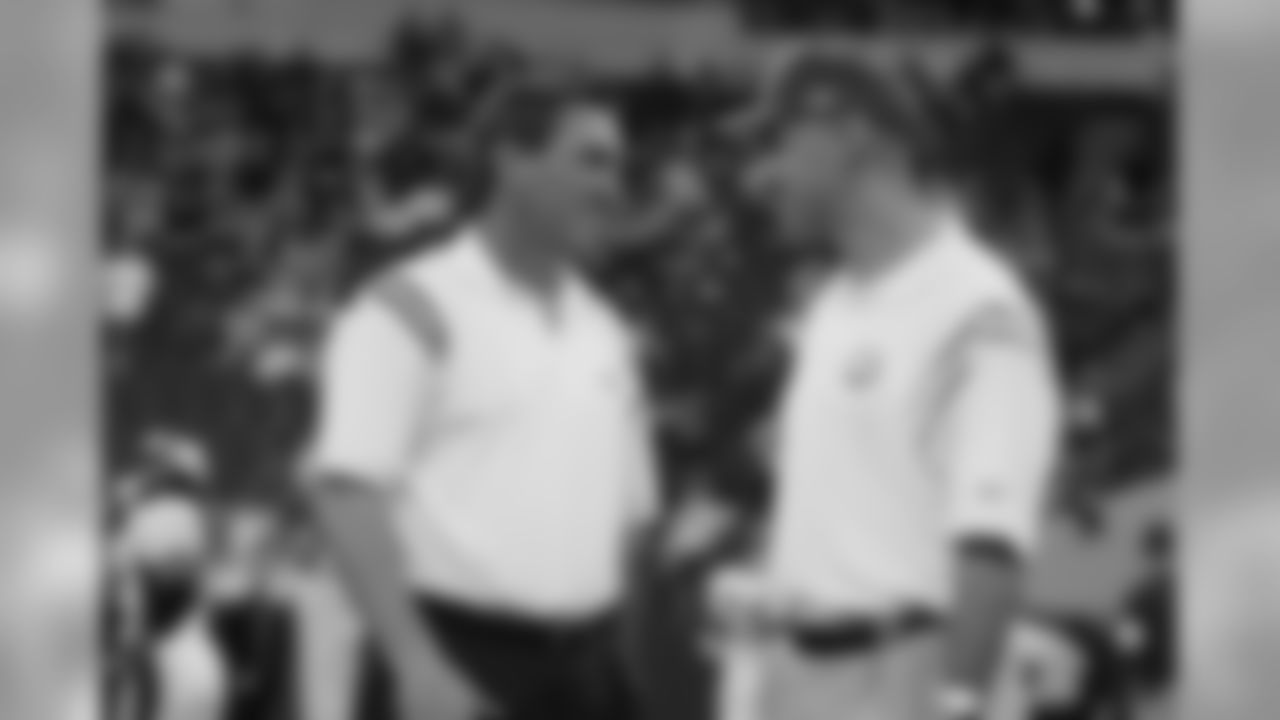
Mike Shanahan chats with Tony Dungy before the start of a Broncos game against the Indianapolis Colts at RCA Dome in Indianapolis, IN on January 4, 2004.

Mike Shanahan made a visit to Eaglecrest High School in Centennial, CO. to present a check to the school for being voted the Staples Coach of the Week.

The Denver Broncos held a special press conference at their Dove Valley facility to announce the retirement of Ed McCaffrey, pictured here shaking hands with head coach Mike Shanahan.

Mike Shanahan greets John Lynch shortly before the press conference introducing Lynch as a new Bronco.

Mike Shanahan was on hand at McGlone Elementary School to conduct a press conference and take a tour of the new playground under construction.

Mike Shanahan jokingly hops onto a motorcycle that was autographed by several players for an auction.

Mike Shanahan was on hand at McGlone Elementary School to conduct a press conference and take a tour of the new playground under construction.
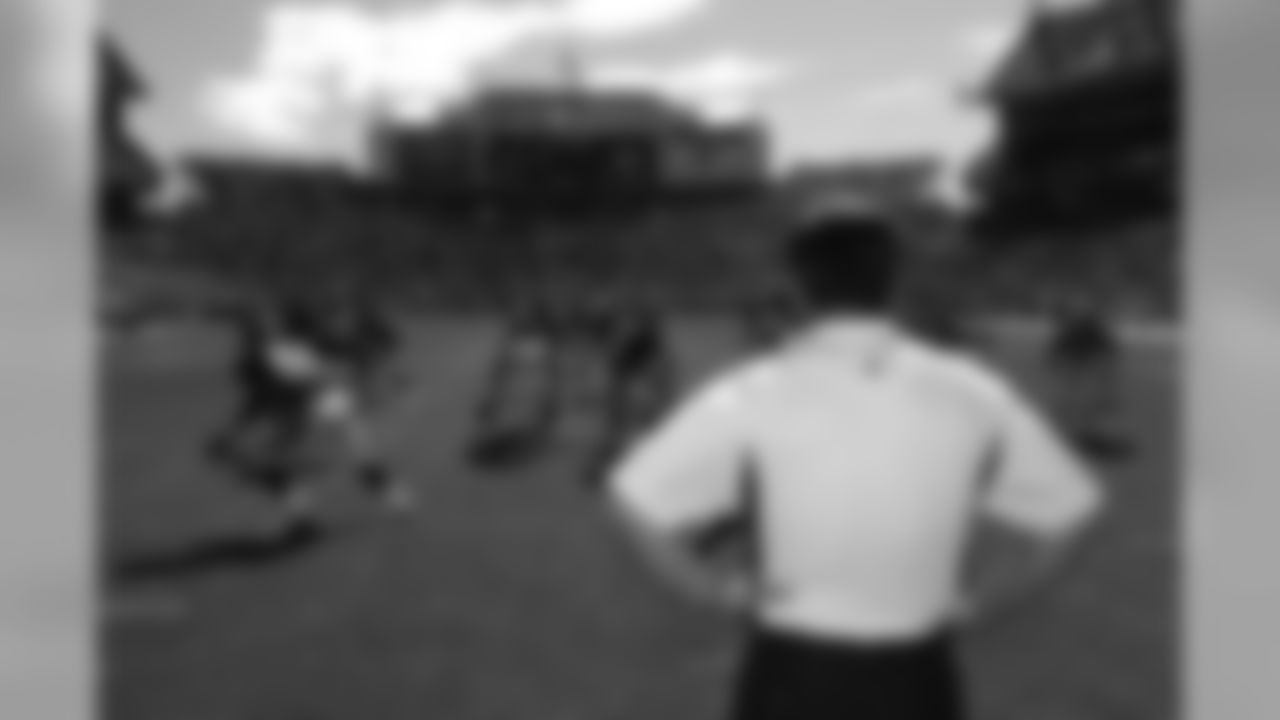
Mike Shanahan watches the players go through their pregame drills before the NFL game against the San Diego Chargers on September 26, 2004 at Invesco Field at Mile High in Denver, Colorado.
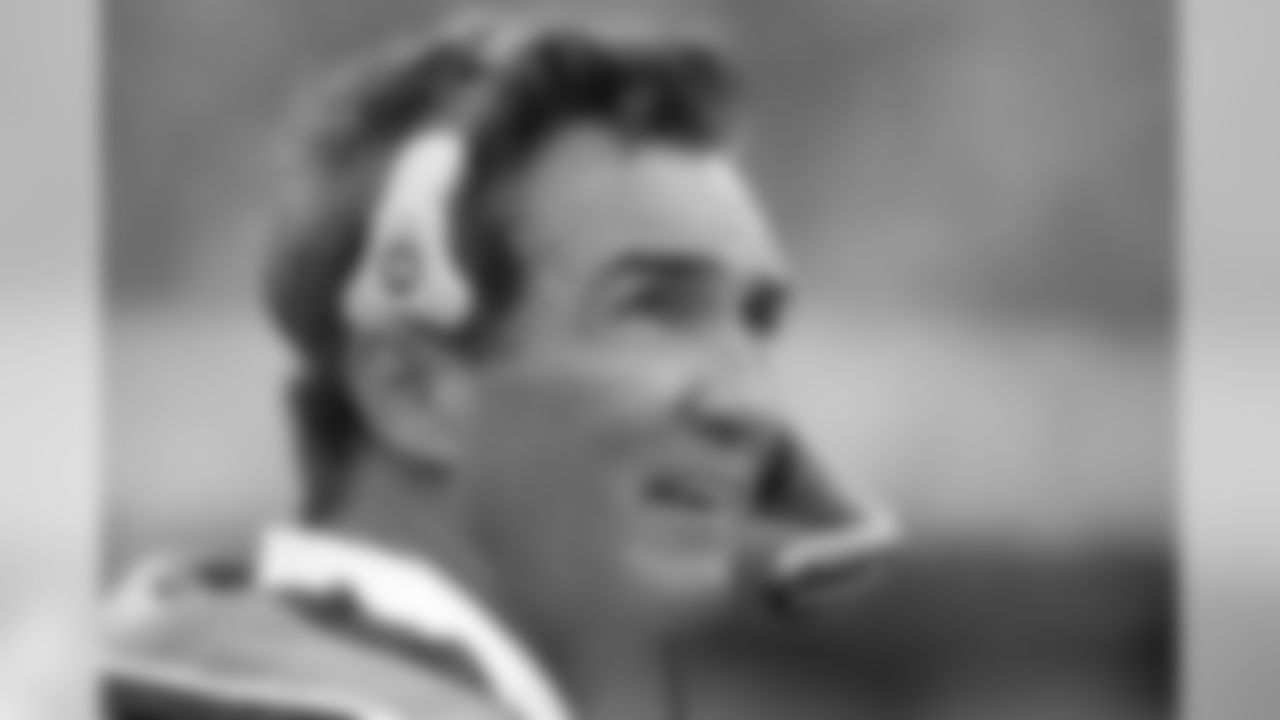
Mike Shanahan watches the game action from the sidelines during the NFL game against the Oakland Raiders on October 17, 2004 at Network Associates Coliseum in Oakland, California.

Mike Shanahan and John Fox chat during the pregame drills before the NFL game against the Carolina Panthers on October 10, 2004 at Invesco Field at Mile High in Denver, Colorado.

Jake Plummer and Mike Shanahan discuss a strategy along the sidelines during a 2004 game against the Raiders. Photo: Ryan McKee/Rich Clarkson and Associates
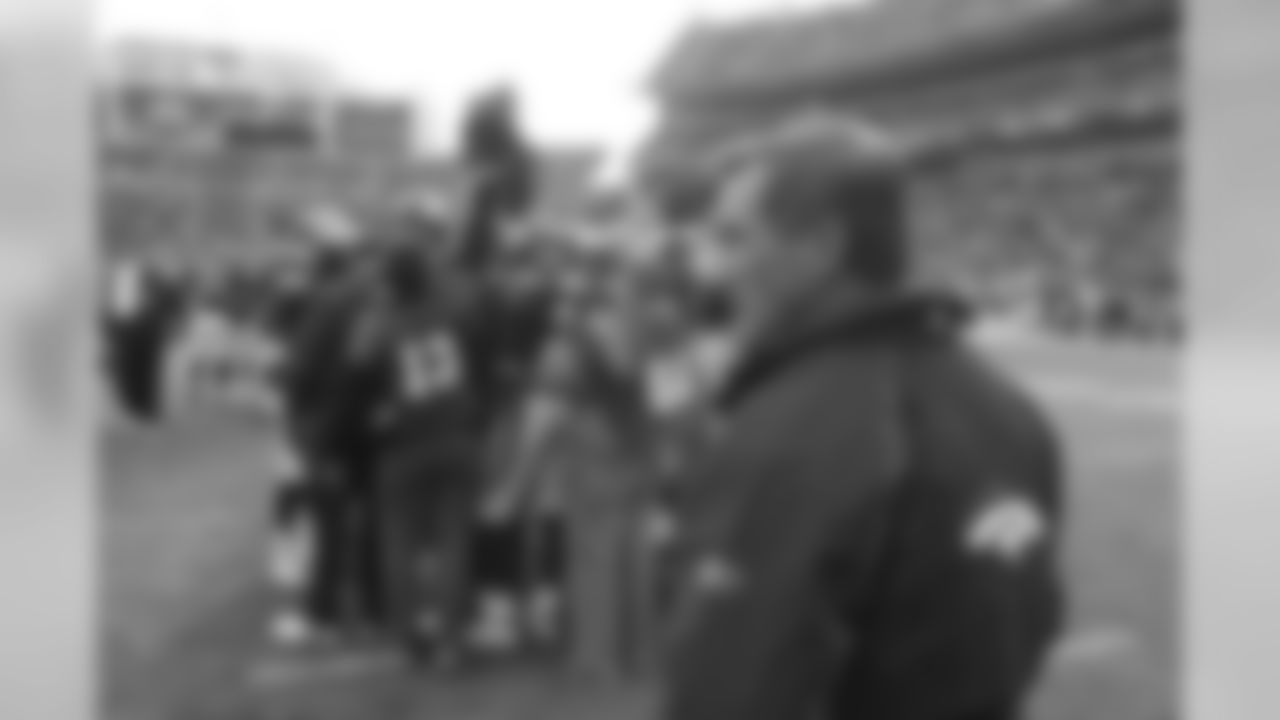
Mike Shanahan watches his players during their pregame drills before a 2005 game against the Colts. Photo: Ryan McKee/Rich Clarkson and Associates

Mike Shanahan watches the game action from the sidelines during a 2005 game.
Photo: Ryan McKee/Rich Clarkson and Associates

Mike Shanahan chats with Steve Atwater before the Pro Football Hall of Fame enshrinement ceremony for John Elway and the Class of 2004

Mike Shanahan hands out game balls after the Broncos' victory during the NFL game against the Oakland Raiders on October 17, 2004 at Network Associates Coliseum in Oakland, California.
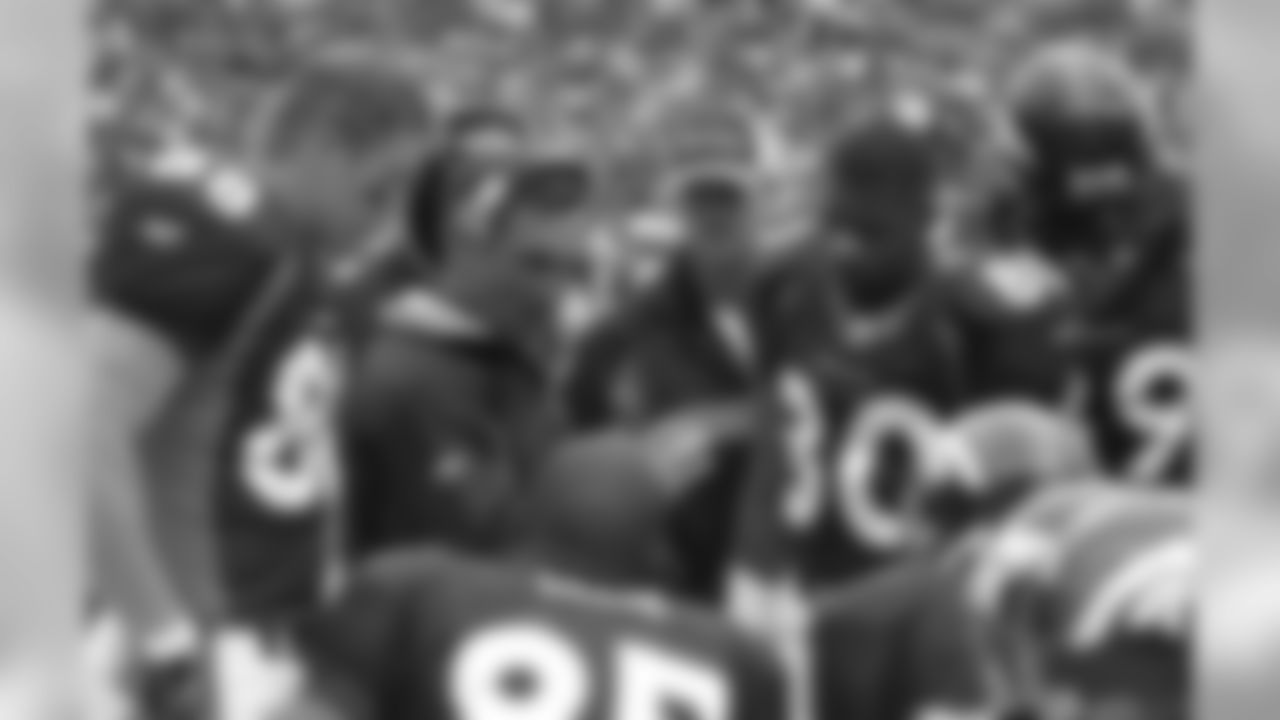
Mike Shanahan discusses a strategy with his players along the bench area during a 2004 game against the Falcons at Invesco Field at Mile High in Denver, CO. ©Brett Wilhelm/Rich Clarkson and Associates, LLC
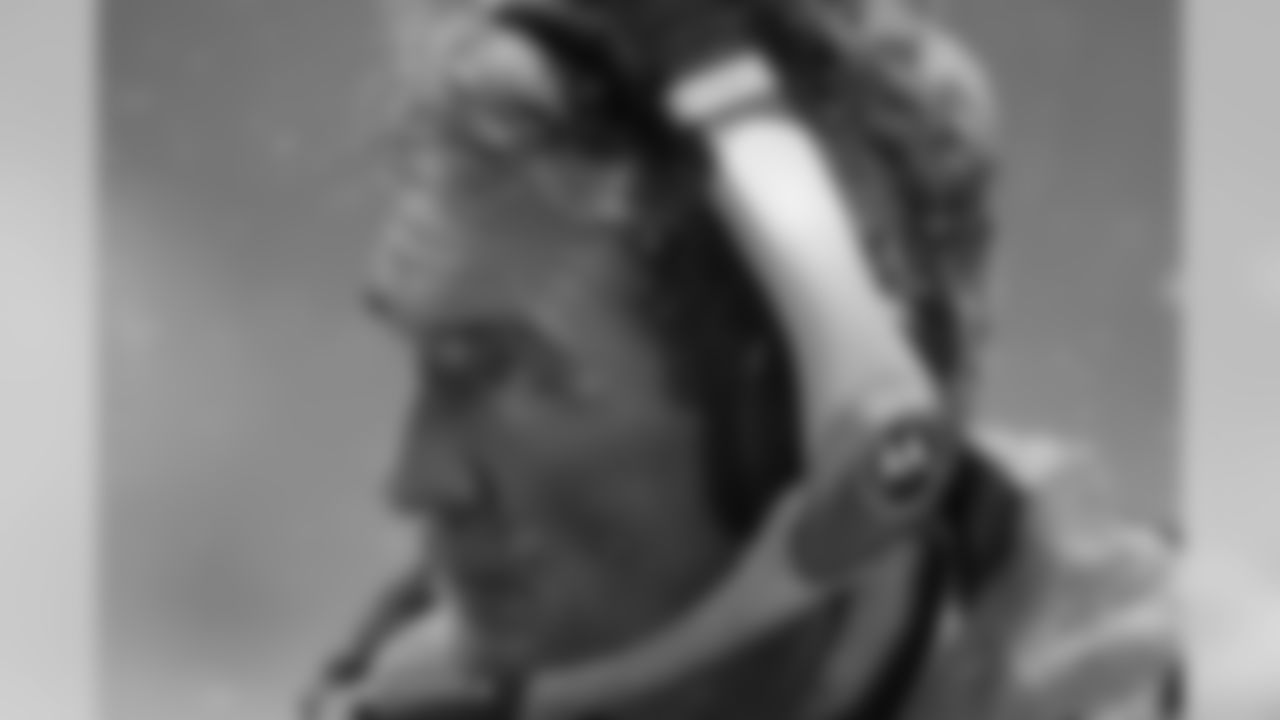
Mike Shanahan watches game action as snow falls during a 2004 game against the Raiders. Photo: Ryan McKee/Rich Clarkson and Associates
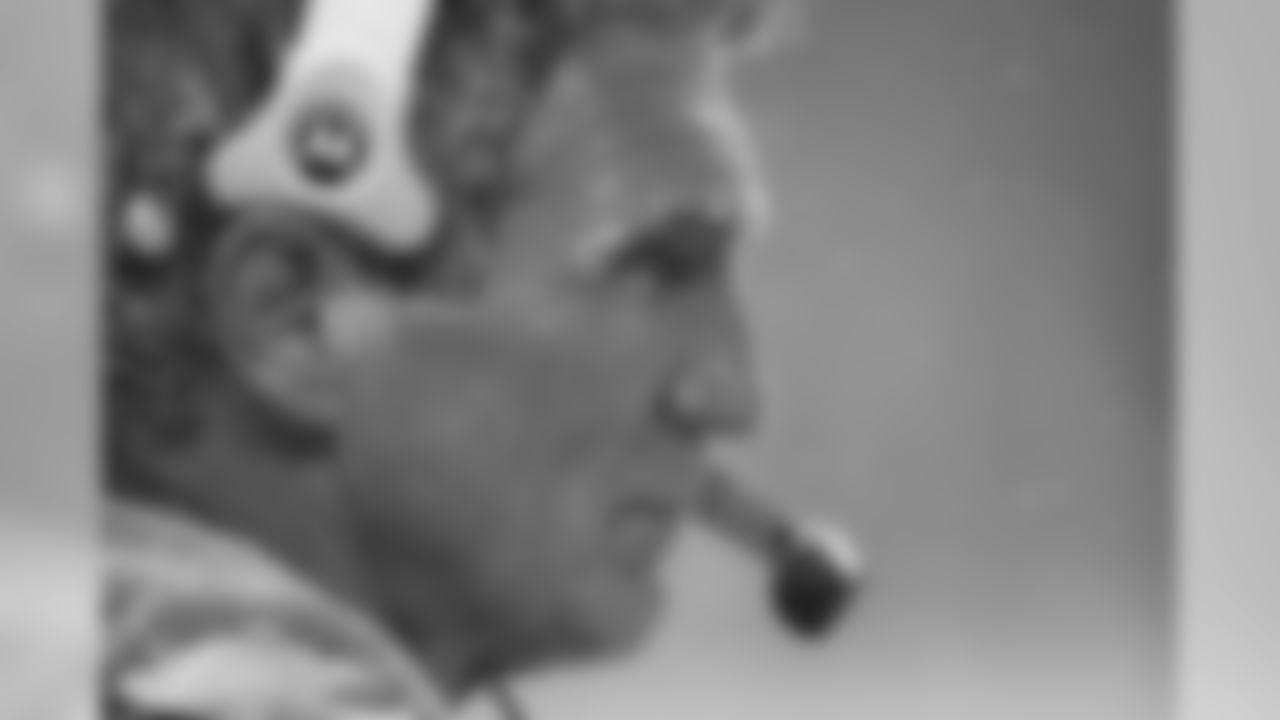
Mike Shanahan looks out on the field during game action against the Raiders in 2004.

Mike Shanahan goes over the game plan with Jeb Putzier during the NFL game against the Tennessee Titans on December 25, 2004 at The Coliseum in Nashville, Tennessee.

Mike Shanahan and his players say a prayer following a 2005 game against the Indianapolis Colts on January 2, 2005 at Invesco Field at Mile High in Denver, Colorado.
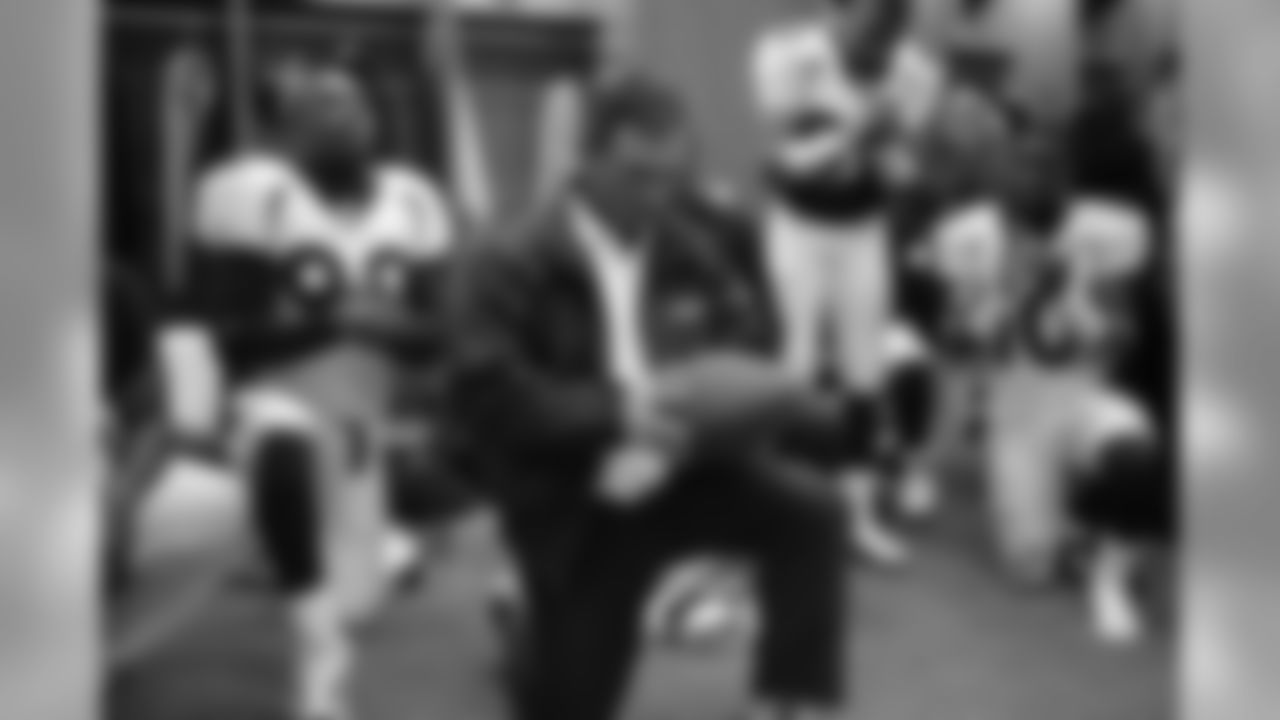
Mike Shanahan is presented with a game ball after his 100th Broncos coaching victory during the NFL game against the Tennessee Titans on December 25, 2004 at The Coliseum in Nashville, Tennessee.

Mike Shanahan speaks to the team after a 2005 victory over the Chargers.
Photo: Eric Lars Bakke/Rich Clarkson and Associates

Mike Shanahan patrols the sideline during a 2005 win over the Jacksonville Jaguars at ALLTEL Stadium in Jacksonville, FL.
Photo: Jamie Schwaberow/Rich Clarkson and Associates
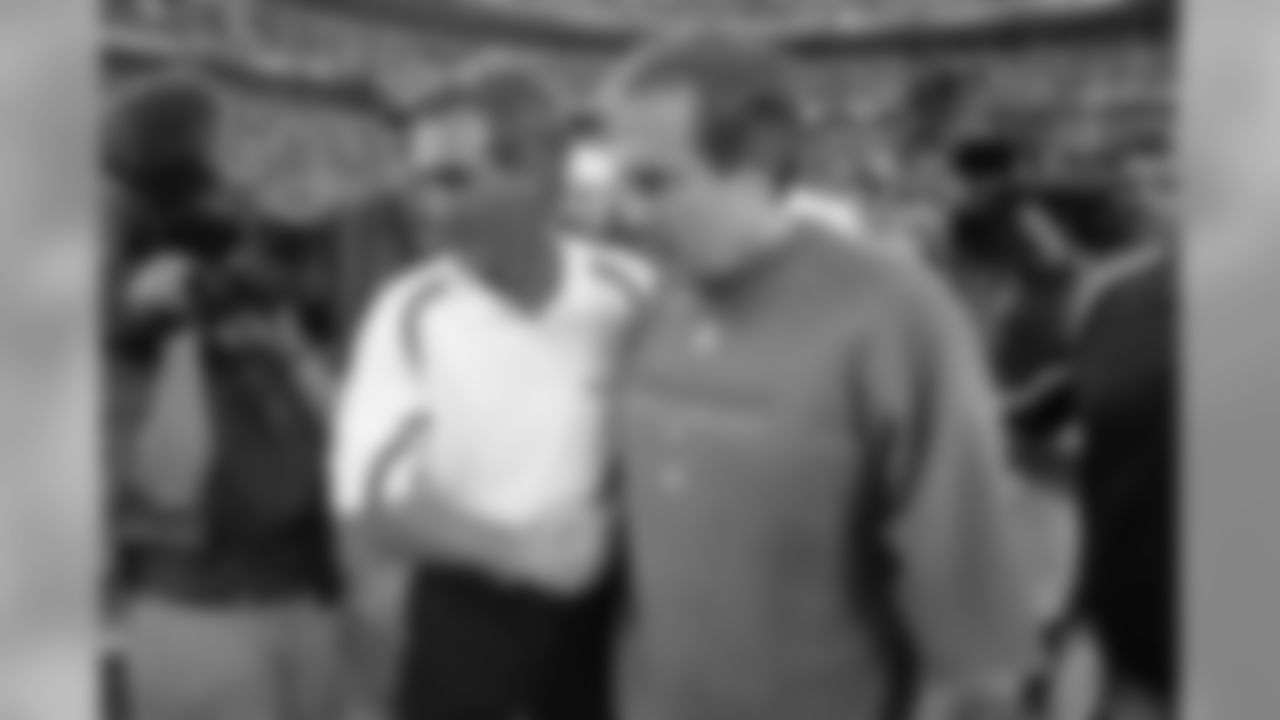
Mike Shanahan greets Bill Belichick after a 2005 game against the Patriots. Jamie Schwaberow/Rich Clarkson and Associates

Mike Shanahan poses with Jake Plummer as the Denver Broncos hold their awards banquet for the 2005 Walter Payton Man of the Year at Morton's Steakhouse. Jamie Schwaberow/Rich Clarkson and Associates
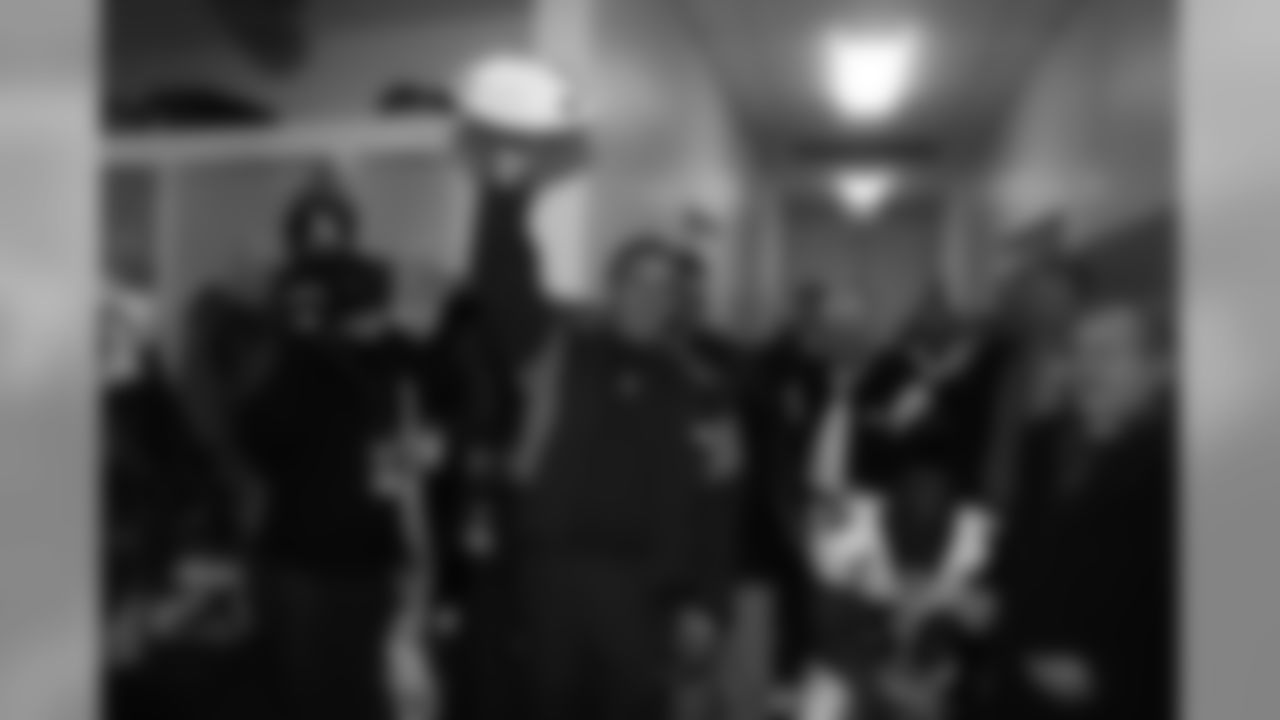
Mike Shanahan holds up a decorative game ball commemorating the win that made him the franchise's all-time winningest coach.
Photo: Eric Lars Bakke/Rich Clarkson and Associates

Pat Bowlen talks with Mike Shanahan in the locker room after the Broncos beat the Patriots at Invesco Field at Mile High in Denver, CO in the playoffs. Jamie Schwaberow/Rich Clarkson and Associates
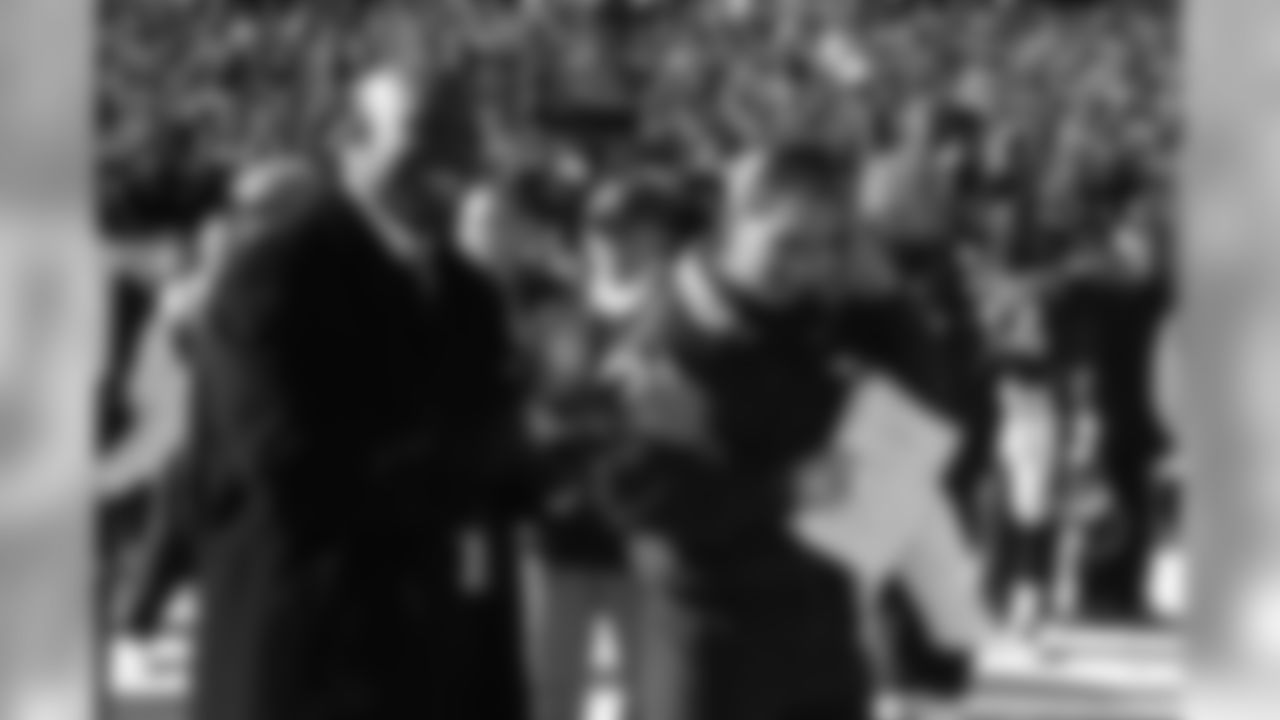
Terrell Davis talks with Mike Shanahan on the sideline before the 2005 AFC Championship Game.
Photo: Ryan McKee/Rich Clarkson and Associates

Mike Shanahan looks on from the sideline before the 2005 AFC Championship at Invesco Field at Mile High Stadium in Denver, CO.
Photo: Ryan McKee/Rich Clarkson and Associates

Denver Broncos head coach Mike Shanahan of the American Football Conference AFC All-Stars surveys the field during the game against the NFC at the NFL Pro Bowl on February 12, 2006 in Honolulu, Hawaii. (AP Photo/Paul Spinelli)

Denver Broncos head coach Mike Shanahan passes the ball as he waits for the start of the team's first football practice after a bye week in Denver on Monday, Oct. 2, 2006. (AP Photo/David Zalubowski)

Mike Shanahan coaches from the sidelines during a 2006 game against the Colts at Invesco Field at Mile High Stadium in Denver, CO. Photo: Rich Clarkson/Rich Clarkson and Associates, LLC

Mike Shanahan talks to the team after a 2006 game against the Raiders.
Photo: Trevor Brown, Jr./Rich Clarkson & Associates, LLC
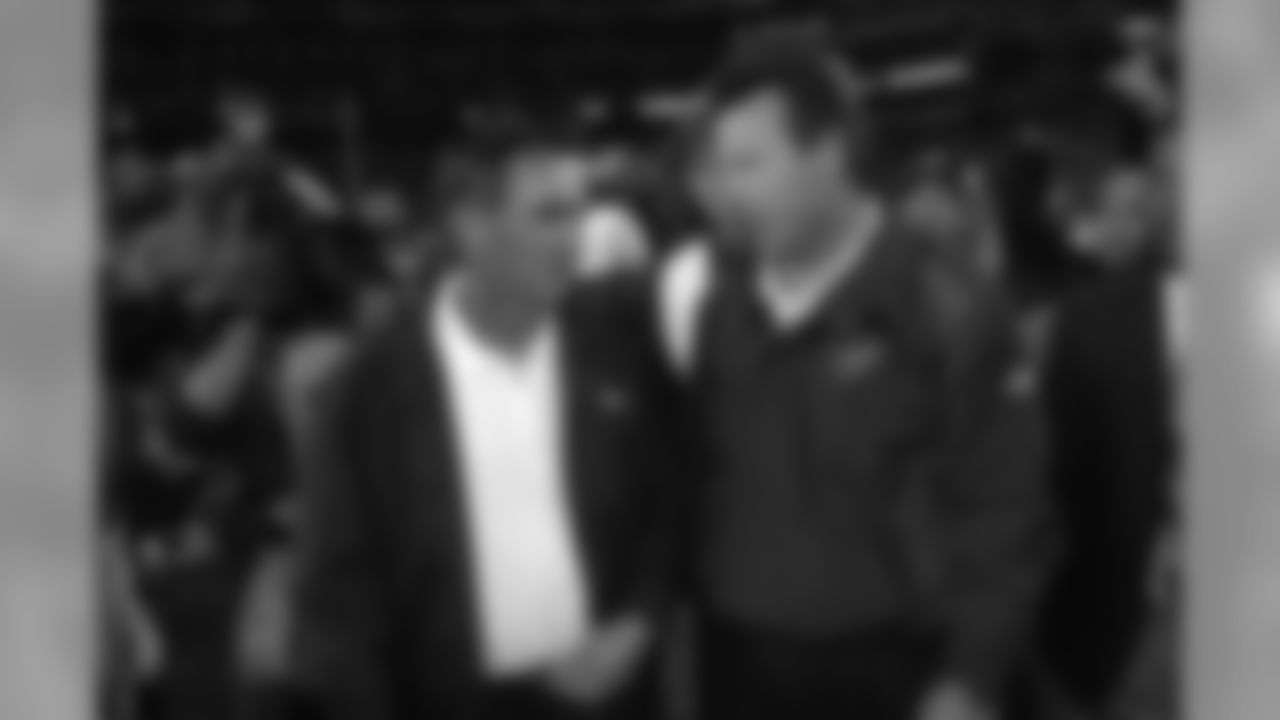
Mike Shanahan talks with Texans head coach Gary Kubiak, who was Shanahan's longtime offensive coordinator, after a preseason match up at Invesco Field in Denver, CO in 2006. Photo: Ryan McKee/Rich Clarkson and Associates, LLC.
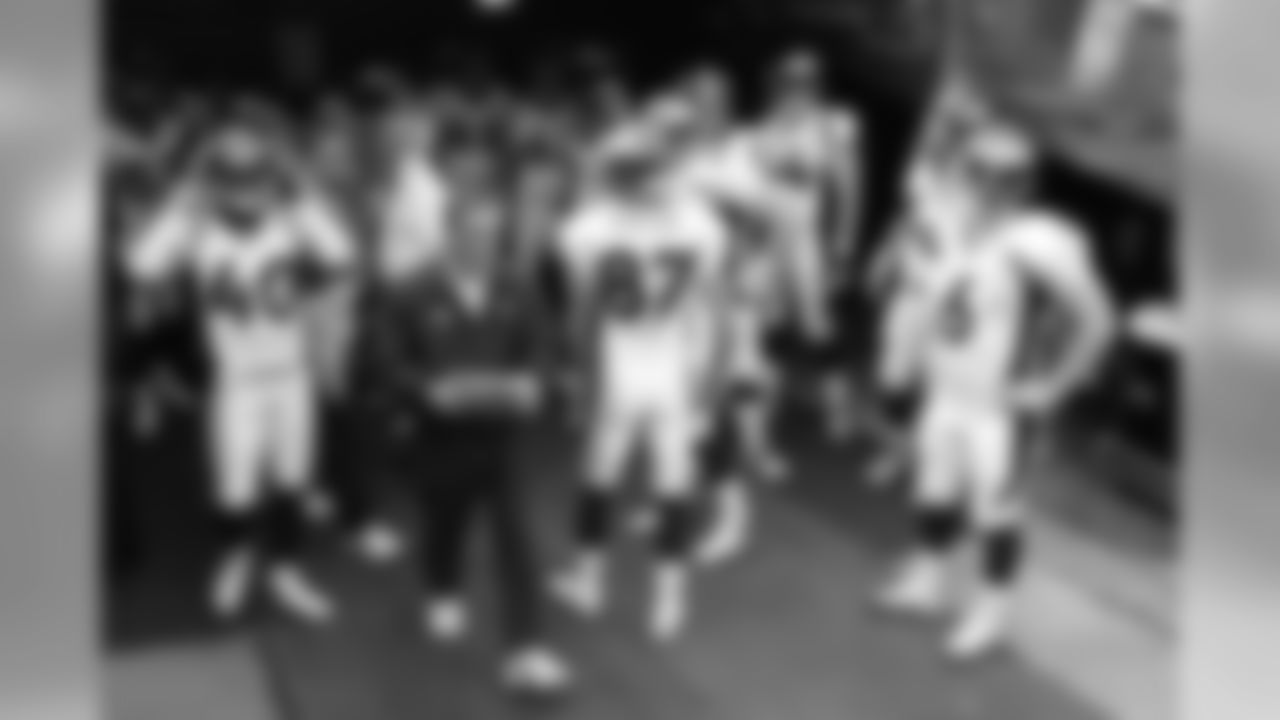
Mike Shanahan prepares to lead the team onto the field before a game against the Raiders.
Photo: Trevor Brown, Jr./Rich Clarkson & Associates, LLC
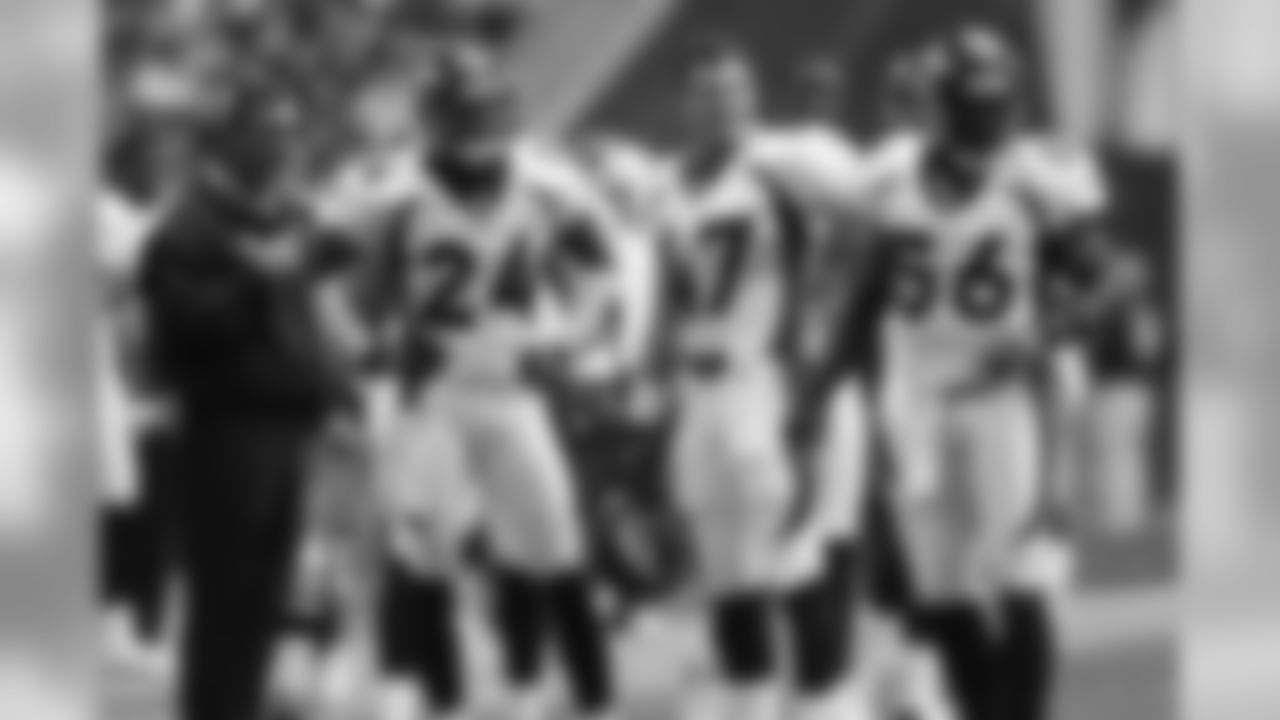
Mike Shanahan talks defensive leaders Champ Bailey, John Lynch and Al Wilson during a 2006 game against the Cardinals.
Photo: Eric Lars Bakke/Rich Clarkson and Associates, LLC.
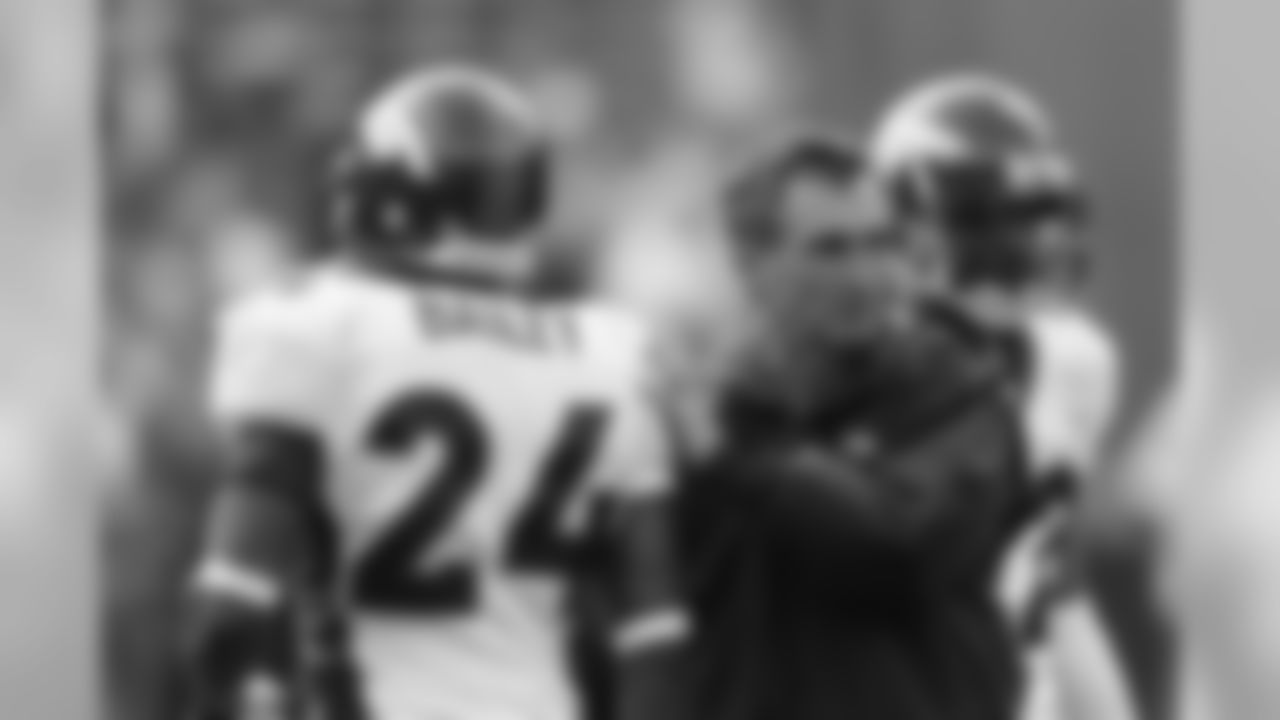
Mike Shanahan greets cornerback Champ Bailey before a 2006 game against the Chargers.
Photo: Trevor Brown, Jr./Rich Clarkson & Associates, LLC.
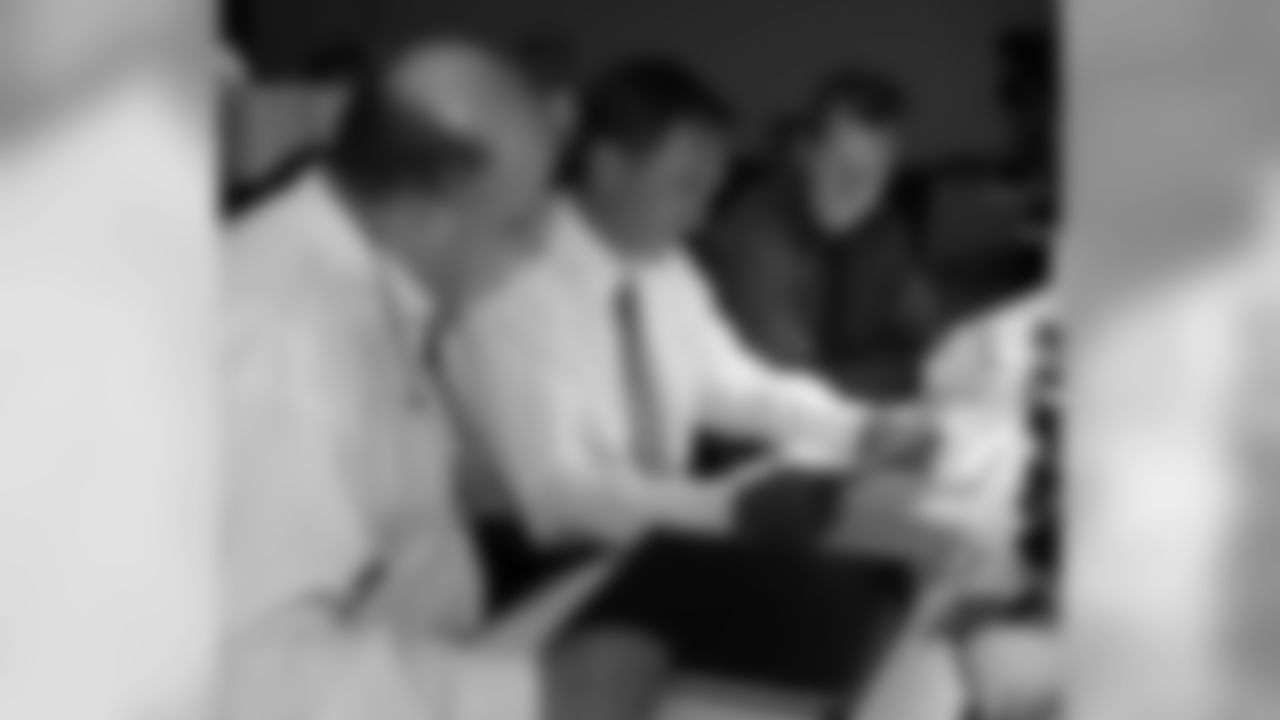
Denver Broncos head coach Mike Shanahan, center, is flanked by the director of player personnel Jim Goodman, left, and Ted Sundquist, right, in the team's draft room at the their headquarters in Denver, Colo., on Saturday, April 28, 2007, as the National Football League's annual draft began. (AP Photo/Ed Andrieski)

Head coaches Herm Edwards of the Kansas City Chiefs speaks with Mike Shanahan of the Denver Broncos on November 11, 2007 in Kansas City, Missouri. Denver defeated Kansas City 27-11. (AP Photo/G. Newman Lowrance)

Members of the 1997 Denver Broncos Super Bowl Team gather with Head Coach Mike Shanahan during Terrell Davis' Ring of Fame ceremony at Invesco Field September 21, 2007.

Coach Mike Shanahan addresses his team in the locker room after Denver defeated Atlanta on November 16, 2008 at the Georgia Dome.

Mike Shanahan talks with Jeremy Bates and Jay Cutler as he tries to redirect the offense in the second half against the Carolina Panthers at Bank of America Stadium December 12, 2008

Head coach Mike Shanahan gave a game ball to Marquand Manuel for his galant play during a week of family strife after the team defeated the San Diego Chargers at Invesco Field September 14, 2008

Denver Broncos coach Mike Shanahan looks over possible picks as the Broncos prepare for the NFL football draft, in Denver on Saturday, April 26, 2008. The Broncos have the 12th pick in the first round of the draft. (AP Photo/David Zalubowski)
"I just had a great gut [feeling]," Shanahan says. "I just knew we were going to win that game. I had that feeling with the guys and how they prepared. And we kept a low profile as well. It was a very physical game, because we were going against the best defense in the league and some great pass rushers, but our guys wore 'em down. And that was a big part about it. … We played four quarters of physical football and was able to come up with a big win."
The most memorable moment of the game was clearly its most physical. Late in the third quarter, the Broncos moved into the red zone hoping to break a 17-17 tie. On third-and-6, Shanahan and the Broncos faced a crucial moment. A touchdown would give the Broncos necessary breathing room. A field goal would give the Packers a chance to take the lead.
"On the 12-yard line, they played off [coverage] most of the time, and we normally would run a quarterback draw — we did that quite a few times with John," Shanahan says. "But the quarterback draw, the center would snap the ball out of the shotgun and they'd go block a linebacker, and those linebackers were very good at coming up and playing the quarterback draw, and we had already been down there and we didn't have success.
"I said, 'You know what? I'm going to try … to put this in John's hands.'"
The play call was not one of Elway's favorites. During practice that week, the team had run it only from inside the five-yard line. Assuming Green Bay's cornerbacks would be lined up close to the line of scrimmage, perhaps in bump coverage given the shortened field at just five yards from the goal line, the plan was to throw a fade to a wideout.
"Every time in practice, John says, 'Well, what if they don't run it, the bump? We don't throw it?'" Shanahan recalls "I said, 'Don't worry about it.'"
Facing that third-and-6 from the 12, though, Shanahan saw an opportunity for Elway and the offense even though he knew the Packers wouldn't be in the planned coverage.
"I knew he didn't like the play, but what he didn't know is that third down and six or seven from the 12, that I knew they were going to play off," Shanahan says. "And I said, 'What a position to put John into, that, number one, they don't expect the quarterback draw coming. John goes back his five steps and then he just takes off, and he runs over a couple people and does a helicopter.
"It kind of defined what a competitor he was. Even though he didn't like the play, he said, 'You know what? I'm going to run it,' and unbelievable job of execution."
A quarter after the now iconic play, Elway, Shanahan and the Broncos were Super Bowl champions for the first time.
After the heartbreak that wrecked their previous season, the Broncos found redemption — and it made lifting that Lombardi Trophy all the sweeter.
"When you finally do get there and win it, part of the process is going through those pains and agony and doing the little things the right way," Shanahan says. "But there's nothing better than finally winning it, especially if you've gone through adversity along the way."














